Late News
CINCINNATI — Cintas Corp. reports it donated more than 30,000 pieces of Cintas garments to The Salvation Army Thrift Store in Canada. The donation is valued at more than $3 million.
“We’re always looking for ways to give back to the local communities we serve and are proud of our ongoing relationship with The Salvation Army,” says Abby Deere, Cintas Corp. “These donated items will help generate funds for The Salvation Army to operate the much-needed programs that are a vital part of the community.”
Cintas says its donation includes discontinued inventory such as blazers, vests, dress shirts and suits. All items donated by Cintas will be offered for sale in 107 The Salvation Army Thrift Store locations across Canada at a reduced cost, which allows the Thrift Stores to support several of The Salvation Army’s social service programs.
Donated items are also given directly to those most in need through The Salvation Army’s voucher program. ALN
To design, or to redesign
BY MATT POE, EDITOR
CHICAGO — Faultless Healthcare Linen, based in Kansas City, Mo., knows what it’s like to design, build and retrofit laundry operations.
It’s tackled around seven such projects in the past 20 years, according to COO Mark Spence.
“Almost always the situation was capacity, creating new capacity to accommodate growth and to accommodate innovations in technology going on in the industry,” he says.
Faultless’ most recent project was its first new build of a laundry facility in St. Louis, which opened in 2018.
The situation of the new build was unique. In 2015, the company learned that its plant that opened in 2012 was going to be subject to eminent domain relocation
Q&A:
to accommodate Next NGA West, a megaproject jointly managed by the National Geospatial-Intelligence Agency, U.S. Army Corps of Engineers and U.S. Air Force.
“It took about three years to negotiate a relocation package with the city and state and then to actually construct the building,”
Spence shares. “We could not find an adequate industrial building within the city limits, geographically, where we need to be located. There just wasn’t any inventory. They did agree to let us construct a new
Industry consolidation impact
BY MATT POE, EDITOR
CHICAGO — Consolidation.
It’s not a new phenomenon in the laundry/linen services industry, but it seems to be occurring more frequently.
For example, in just the past couple years, Cintas acquired G&K Services, and AmeriPride Services merged with Aramark.
And it’s not just happening with laundry operations. Entities in markets that facilities service, such as hospitals and hotels, are merging and being acquired.
What is the effect of this consolidation, and what does it mean for the laundry/ linen services industry?
American Laundry News contacted Bob Corfield, founder of the consulting firm


Demystifying Microfiber

Panel of Experts
In this issue, the experts offer a variety of soil sort solutions to help reduce stains, rewash
for Linen Management (ALM); Joseph Ricci, president and CEO of TRSA, the association for linen, uniform and facility services; and Sam Spence, a consultant with TBR Associates, to learn more about what’s going on with consolidation in the laundry/ linen services industry, and its impact.
What has been the impact on the laundry/linen services industry as operations consolidate?


CORFIELD: Consolidation is occurring on both sides. Hospitals are consolidating across markets, which drives volume to multimarket laundry operators. Hotel groups continue to consolidate with hotel GPO (group purchasing organizations) driving volume to larger plants.
While the purchasers of laundry/linen services are driving toward lower cost by driving volume to single companies,
Major Michigan Healthcare Laundry
Three Michigan health systems collaborate on $48 million laundry service facility


JUNE 2019
www.americanlaundrynews.com INSIDE [14]
The Newspaper of Record for Laundry & Linen Management
Laundry Design Group; Linda Fairbanks, executive director of the Association
[20] Volume 45, Number 6 [24]
See DESIGN on Page 6
Experts talk consolidation effects on laundry/linen services, markets served
Cintas donates more than 30,000 garments
Workhorse product has revolutionized cleaning around the world, author says
Faultless Healthcare Linen opened its new St. Louis healthcare laundry plant in 2018. (Photo: Jeff Wellman)
See CONSOLIDATE on Page 10
Mergers and acquisitions, along with activity by private equity firms, are changing the laundry/linen services landscape. (Image licensed by Ingram Publishing)
That’s the question laundry operations must answer when capacity is reached, equipment ages out, etc.
Your Views Survey:
Laundry operator opinions mixed on minimum wage increase proposals
CHICAGO — The cost of labor is one of the largest line items in a laundry/linen service’s budget.
And laundry operators have a mixed view on minimum wage increases, in general, according a recent Your Views survey conducted by American Laundry News.
“Laundry is not an easy job and laundry workers are exposed to hazards other career fields aren’t,” a respondent shares. “Although laundry is considered a low-skilled job, the advances in technology and the demands of the customers requires an experienced and engaged workforce.”
When asked if they support minimum wage increases, in general, 19% of operators who took the survey “strongly support” increases, while 26.2% “support” them.

More than 33% indicate they either “oppose” or “strongly oppose” minimum wage increases in general. About 21% say they are neutral on the subject.

Some of the reasons respondent support/oppose minimum wage increases include:
• Workers need to make a decent wage to support their families.
• A living wage should be a right. The tax cuts are not filtering to workers, so this must be legislated.
• I support the minimum wage increase, but there needs to be an offset to our increasing healthcare cost and insurance costs.
• It hurts the working families, as positions that should receive higher wages cannot because entry level wages are higher.
• There is a max amount people are going to pay for certain items. So, for example, if minimum wage increases causes a fast food hamburger [wage] to go up to $15, a lot of those places are going to go out of business, and then there will be less jobs overall. Plus, companies are already automating functions to eliminate staff, such as online ordering/app ordering for restaurants.
• The market should determine labor prices. Artificially increasing the cost of low-end labor causes inflation and lower employment levels, especially at the teenager and unskilled labor market.
• Wages do need to increase, but not to the extreme that is being proposed.
• We all should try to pay our workers a wage that allows them to live life. That being said we should also understand what an entry level job is, and the amount of training that is necessary (practically none) to work in a laundry.
Respondents reflect the attitude of the last two comments, because nearly 71% indicate that they don’t support legislation in Congress to raise the $7.25/hour Federal minimum wage to $15/hour by 2024. Nearly 27% support the legislation.
In addition, the majority of survey takers (62%) indicate their state or region is considering minimum wage increases. Almost 24% say increases aren’t being considered, and 14% don’t know if their state/ region has such a proposal.
So, how much of an increase in the minimum wage (per hour) would respondents support? Nearly 20% indicate $4 per hour or higher, 14% would support $3 per hour and almost 17% say $2. More than 14% indicate they wouldn’t support any increase, and almost 12% would support a $1 an hour rise.
Other responses to the question include:
• The market should set the rate.
• Inflationary annual adjustment tied to regional governmental CPI adjustments.
• No increase. It is a false hope they are feeding the uneducated labor force to believe a higher wage will work. It will just become the new poverty level.
• Small increases overtime.
• Let the market decide.
• $10.
• In the $11-$12 range.
• New York is at $12, and going to $15 without offsets, will only result in finding ways to be more efficient, which will translate into less jobs.
Of course, a laundry would likely have to cover the cost of a minimum wage increase, and more than 26% of survey takers would raise prices to cover the increase. More than 14% would cut costs elsewhere, while nearly 12% say they wouldn’t be affected. Other options include reduce workforce (9.5%), reduce employee benefit options (4.8%) and seek budget increase from parent institution (2.4%).
The remaining question respondents offer some of the following thoughts:
• Increase automation.
• Would have to look at all cost and cut to save wherever possible without affecting quality of service that we provide.
• Would require attempting all of the above.
• Costs may actually decrease because engaged staff come to work and perform at standards which reduces overtime, OWCP claims and
Publisher
Charles Thompson
Phone: 312-361-1680
E-Mail: cthompson@ ATMags.com
Associate Publisher/ National Sales Director





Donald Feinstein
Phone: 312-361-1682
E-Mail: dfeinstein@ ATMags.com
Editorial Director
Bruce Beggs
Phone: 312-361-1683
E-Mail: bbeggs@ ATMags.com
Editor
Matt Poe
Phone: 866-942-5694
E-Mail: mpoe@ ATMags.com
Production Manager Roger Napiwocki
Digital Media Director
Nathan Frerichs
Phone: 312-361-1681
E-Mail: nfrerichs@ ATMags.com
Advisory Board
David Barbe • Jim Buik
Tony Jackson • Tom Marks
Main Phone: 312-361-1700 Fax: 312-361-1685
Subscriptions
630-739-0900 x100 www.americanlaundrynews.com
American Laundry News (ISSN 1091-9201) is published monthly. Subscription prices, payment in advance: U.S. 1 year $46.00; 2 years $92.00. Foreign, 1 year $109.00; 2 years $218.00. Single copies: U.S. $9.00; Foreign $18.00.
Published by American Trade Magazines LLC, 650 West Lake Street, Suite 320, Chicago, IL 60661. Periodicals postage paid at Chicago, IL, and at additional mailing offices.
POSTMASTER, Send changes of address and form 3579 to American Laundry News, Subscription Dept., 440 Quadrangle Drive, Suite E, Bolingbrook, IL 60440. Volume 45, number 6. Editorial, executive and advertising offices are at 650 West Lake Street, Suite 320, Chicago, IL 60661. Charles Thompson, President and Publisher. American Laundry News is distributed selectively to qualified laundry and linen management and distributors in the United States.
© Copyright AMERICAN TRADE MAGAZINES LLC, 2019. Printed in U.S.A. No part of this publication may be transmitted or reproduced in any form, electronic or mechanical, without written permission from the publisher or his representative. American Laundry News does not endorse, recommend or guarantee any article, product, service or information found within.
Opinions expressed are those of the writers and do not necessarily reflect the views of American Laundry News or its staff. While precautions have been taken to ensure the accuracy of the magazine’s contents at time of publication, neither the editors, publishers nor its agents can accept responsibility for damages or injury which may arise therefrom.
MEMBERSHIPS
2 JUNE 2019 | AMERICAN LAUNDRY NEWS www.AmericanLaundryNews.com INSIDE: June 2019 • Vol. 45 | No. 6 [16] Effective Commercial Laundry Marketing Eight tips across the spectrum for getting more return on investment from your laundry’s marketing dollars [29] Employer Drug, Alcohol Testing Policies Expert offers insights and key considerations for creating an effective policy in the era of marijuana, opioids [32] Career Track [34] Classified Advertising [35] Source Directory [38] Trade Ticker [38] Calendar of Events
See SURVEY on Page 4
Milnor has a better solution through dilution.
When Milnor introduced PulseFlow® technology, CBW® washing was thrust into the future. The idea of balancing time, temperature, mechanical action and chemistry was missing one critical piece of the pie – DILUTION through the efficient use of water.

PulseFlow combines the innovative RecircONE® fast wet down and chemical immersion in the first module with standing bath washing in every spacious process module. Thorough and efficient dilution occurs by way of intermittent high velocity counterflow rinsing and traditional True Top Transfer.
The result is hygienically clean linen using less water (as low as 0.3 gallons per pound/2.5 liters per kilogram) and less energy as proven time and again by hundreds of PulseFlow tunnels in a variety of laundry applications worldwide.
Contact an authorized Milnor distributor or call 504-712-7656 to find out more.
www.milnor.com

registered trademarks.
*PulseFlow®, CBW® and RecircONE® are Pellerin Milnor’s
A very active industry
I have to admit, this wasn’t an easy edition of American Laundry News to put together.
Oh, not because of anything personally to do with me (although I admit to having plenty of my own foibles and quirks). And it wasn’t because of any technical glitches.
Nor did my “struggles” involve a lack of material and input. In fact, the opposite is what challenged me with this issue.
The laundry and linen services industry has been so active, my “well” was overflowing with information, resources and articles.
That can be expected during a Clean Show year (don’t forget to drop by and see us in booth #4645 in New Orleans), but even then, this month has seemed much busier than usual to me.
With only so much print space,
Survey
other associated costs.
The Editor’s Desk MATT POE
decisions had to be made. For example, the Trade Ticker section on page 38 features several news items, but I could have included many more (if you don’t already, visit our website www.americanlaundrynews.com for “as it happens” industry coverage).
Then there’s Career Track,
which begins on page 32. Nearly half a page of job moves were sent my way late into the production cycle.
Of course, we want to provide the most complete coverage of Clean as possible, and this issue includes exhibitors (page 11) added after our May issue went to print.
And that’s only the “late-breaking” news. This industry is also very active in education and sharing information for features and stories, and I couldn’t turn away any late insights.
My busy cycle is a testament to all of you in the laundry/linen services industry. I can’t thank you enough for being so open and sharing with information and advice.
And it’s all to help everybody keep it clean. ALN
Continued from Page 2
• I think in most organizations there is waste that can be cut.
Increasing automation seems to be a popular way to offset labor costs. More than 70% of survey takers indicate their operation has further automated to offset costs. Almost 24% haven’t taken steps toward more automation.
When asked, “Do you believe a higher minimum wage would decrease employee turnover/ increase employee retention?,” nearly 29% were neutral on the topic, while 26% disagree. More than 16% strongly agree with the statement, and almost 12% agree.
Just about 16.7% strongly disagree that minimum wage increases would decrease turnover/ increase retention.

“We recently underwent a wage adjustment program for our hourly employees,” writes a respondent. “Every employee received a $2 increase, then, based on seniority, employees received additional increases, some in the $4 range. We increased our starting wage by $1.20 and plan to increase it another $.80 on July
1, 2019.
“In over one year it has had absolutely no effect on our staffing, in fact we have had open positions for 6 months.”
Another shares, “I pay more and have zero turnover. I don’t have to concentrate on hiring and training. I can concentrate on sales and marketing thereby making my business stronger and able to keep increasing the employees’ compensation and the business bottom line.”
While the Your Views survey presents a snapshot of readers’ viewpoints at a particular moment, it should not be considered scientific. Due to rounding, percentages may not add up to 100%.
Subscribers to American Laundry News e-mails are invited to take the industry survey anonymously online each quarter. All managers and administrators of institutional/ OPL, cooperative, commercial and industrial laundries are encouraged to participate, as a greater number of responses will help to better define operator opinions and identify industry trends.
ALN
•
•
RLLD
Doing research on stains
Sooner or later every manger will be faced with the problem of a new, mysterious stain that starts showing up in the laundry.
The first challenge, if you service more than one institution, is to determine where the stain is coming from. If it is caused during the delivery of excellent healthcare, it is likely that the problem will spread from one institution to another.
The first thing to realize is that you are not alone. If you are having this problem, then it is a certainty that someone else is experiencing the same problem.
The first step to finding a solution is to determine what items the stain is appearing on. Work with your employees to determine the range of textile products that are affected.
Then, develop an accurate description of the stain both before and after it is washed. Is the stain identifiable before the item is washed? Is there an odor associated with it? Does the stain have an oily or greasy feel? A full description of the problem, including photographs, is most helpful.
Once you know which items are affected and have an accurate and complete description of the stain, the next step is to publish on an industry message board about your stain. The chances are high that someone else has experienced that problem and knows where it comes from and any possible alterations to processing that might lessen the problem.
If you are truly lucky, you might be the first person to have run into this problem, and you will need to take the following steps to determine the source. Start with your list of items that are affected. Are they hospital-wide items, or are they used by only one department? The wider the potential range of linen items affected, the more likely it falls into a stain that comes from a topical disinfectant.
Approach your hospital contact if you are an outside service, or bring the problem to the attention of your boss if you are an in-house laundry.
The initial goal is not to place blame or make anyone feel like they have done anything wrong. The goal is to determine the source of the problem so you and your chemical supplier can develop an effective treatment for the problem.
Remember, the goal is to provide excellent healthcare to the patients. That is the goal of everyone involved in the healthcare industry. Unfortunately some products that are highly effective as a disinfectant also can cause a staining problem.
Your process is to eliminate potential sources of the problem by a thorough and careful examination of the products used in the hospital. Approach your research by examining broad methodologies for treating patients.
Never ask about specific treatments to specific patients because this would violate HIPAA regulations. You do not need to know about Mrs. Jones’s medical treatment specifically, but you would like to know about the current bed bathing procedure for patients. If you can isolate the problem to a particular type of patient, then understanding the normal treatment procedures for that type of patient would be very helpful.
I would recommend starting with topical disinfectants and bed/bath products to determine if any items in this category are causing your problem. I find normally working with a member of the infection control staff at this point to be very helpful.
I would need to obtain a small sample of each product used in the hospital. Take those samples back to the laundry and apply them to specific locations on various textile products to see if the product causes the new stain.
If it turns out to not be in this category, then it is likely a medicinal stain, which makes isolating the source of the stain very important. Medicinal stains are normally caused by a group of patients with a specific diagnosis.
Why should you go through all this work to identify the source of a stain, and how will that help me properly handle the problem? These two questions will be answered in next month’s article.
Eric Frederick served 44 years in laundry management before retiring and remains active in the industry as a laundry operations consultant. You can contact him by e-mail at elfrederick@cox.net, or by phone at 540-520-6288.


4 JUNE 2019 | AMERICAN LAUNDRY NEWS www.AmericanLaundryNews.com
From
COLUMNIST AT LARGE Eric L. Frederick,
ALN
Top Stories Appearing on AmericanLaundryNews.com for the 30 Days Ending May 15 (WE) = WEB EXCLUSIVE NEWS • In Memoriam: Jackie Hager, Miller’s Textile Services • Larson to Retire from Encompass Group
Continental Welcomes New Team Members ...
Senso Technics B.V. Opens U.S. Operations
American Laundry Systems Completes 100th Project
Where Did All the Linen Go?
Outfitting Smaller Laundries
Cut Usage, Lower Costs, Keep the Quality
Leveraging Data to Improve Operations
Senior Care Community Ensures Laundry is Disinfected OUR SISTER
From AmericanDrycleaner.com: • Buying a Dry Cleaner
Dry Cleaner to Retire; Dogs Sad From AmericanCoinOp.com:
•
•
•
COLUMNISTS/FEATURES •
•
•
•
•
WEBSITES
•
Laundry Ownership Growth Through Acquisition
Goin’ with Cohen: Amazing Amazon Finds




















americandawn.com | imagine@americandawn.com HACCP IS ABOUT FOOD SAFETY In food processing plants, HACCP plans are about ensuring that critical control points are contaminant free. merican a n offers a full line of arments, as ell as the no ledge and training to support our team. ive us a call to learn more a out ho e can open the door to this growing marketplace. CALL US: 800 821 2221 LET’S KEEP OUR FOOD SAFE
building, a new facility.”
Faultless ended up building an 82,000-square-foot healthcare laundry facility not far from its other St. Louis healthcare plant in a new industrial development.
While the Faultless scenario was unique, many laundries face the question at some point of whether to build a new plant or redesign existing space.
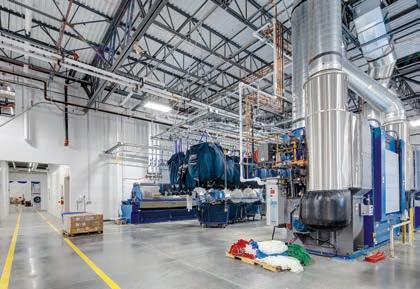
THE BIG DECISION
Ed Kwasnick, director of business development for designbuild contractor ARCO/Murray, says the decision to expand an existing laundry or build a new plant is typically triggered by growth.
“The laundry’s volume has exceeded its maximum capacity and the plant can’t meet the demand of the business any longer,” he says. “Your choices are to expand or stop growing. Yes, you can upgrade to more efficient equipment. Yes, you can renovate your laundry to add more equipment and use the given space more efficiently. You can add another shift and run more hours to increase production.
“But after you do all that, and you still can’t get the job done, it’s time to expand or build new.
Matthew Alexander, president and CEO of Pertl & Alexander, a consulting firm that specializes in design and management of laundries, says that due to consolidation, major laundry suppliers typically build large new facilities to consolidate production and realize economies of scale or to expand market territory.
“Laundries owned by hospitality or healthcare organizations, however, typically do not have the same growth ambitions as laundry supply companies,” he points out. “Due to outsourcing of laundry by hotels and hospitals over the past 20 years, many of the existing facilities are in the end of life expectancy of machinery (20-30 years).”
While laundries have typically invested in some labor- or utility-saving equipment over the years, Alexander goes on to say, it’s typically when major production and mechanical systems require replacement that the determination of redesign or build new takes place.
Gerard O’Neill, president and CEO of consulting company American Laundry Systems, sees budget and space as determining factors in the decision to redesign or build new.
“While budget will always be a big part of the influence as to which direction to go, it does not always win out,” he says. “If your existing plant does not have enough space and cannot be expanded because you are landlocked or you cannot
get any more utilities, or your workforce has slowly but surely moved out of the inner city area you occupy to the suburbs, or the area you occupy just does not have the infrastructure to support an upgrade, redesign or expansion, or on the other end a developer comes along and wants your property to build dorms for the local university, then it may pay you to move out and build new.”
O’Neill points out that any number of reasons can influence or make the decision to stay put or to start new somewhere else. His advice? Do a pros and cons spreadsheet comparison and put everything into it, including the “pain” experienced from doing a retrofit, and, of course, the savings.
“For those who’ve been through it, building a new or re-equipping an existing laundry is a grueling task,” shares Steve Miller, vice president and general manager of laundry consulting company Victor Kramer Co.
“From conception and design of a laundry through to the start of construction and opening day can be a long, complex and difficult affair. There is much to consider, so many decisions to make and unending obstacles to clear before even the first shovel of dirt is moved or a purchase order issued.”
In his mind, the decision process begins with the “realization of need,” something that comes on slowly over many years or perhaps suddenly overnight. However, Miller points out that cost and capital almost always trump every
laundry processing more efficient and sustainable. This technological advancement can influence the design/redesign decision.
“However, the decision to expand an existing plant vs. building new is still very much the same,” he shares. “Do you have room for expansion? Can you expand without shutting down the existing operation? Will an expansion provide the necessary capacity for future growth? Is expanding going to be more costeffective than building new?”
If the answer is “yes” to these questions, then Kwasnick says expansion is likely the best option. Is the operation landlocked? Will an expansion require the laundry to be shut down for an extended period of time? Is expanding only going to buy a couple years before outgrowing the facility once again? Is the cost of expansion equal to or greater than new construction?
ously, and this is spurring redesign and potential new build projects.”
REDESIGN
Kwasnick says that usually the most important factors leading to a laundry redesign are space, capacity and cost.
“Typically, the cost to expand is less expensive than the cost to build new,” he says. “Think of it in terms of your home. It’s typically more cost effective to add a new sunroom, remodel your kitchen, expand the garage, and build a new deck, than it is to build a new home.”
When the operational savings of building a new plant, when measured against the existing and project volume of business, doesn’t produce an attractive ROI, and when the existing plant is able to meet the projected task, that’s when plants are typically renovated, adds Alexander.
linen storage spaces might serve.”
Improvements to capacity, workflow, efficiency, maintenance, quality, reduced doublehandling, operating cost, etc., might be achieved by replacing a conventional washroom with a batch system, he says, or by installing energy- and water-conservation systems.
“What kind of wall, floor and ceiling finishes are most durable, least expensive and best suited to pertinent ergonomic and maintenance issues?” Miller continues. “Rebuilt flatwork ironers might be more cost-effective than buying new.”
However, a redesign needs to meet long-term growth needs, says Kwasnick.
other design influence.
“Where labor is expensive, such as Chicago, San Francisco and New York City, automation and efficiency take first chair,” he says. “When jobs creation is the objective, automation is less important and simplicity may rule. Transportation difficulties might favor an on-premises plant. Areas with high utility rates will mandate the best the industry has to offer in the way of conservation and reclamation technologies.”
The laundry industry has seen vast improvements in technology in the last 20 years, says Kwasnick. Production equipment can process greater and greater amounts of laundry in a smaller footprint. Productivity systems help manage production scheduling and maximize output, efficiency, and quality. Utility systems help minimize utility consumption while making
“If the answer to this set of question is ‘yes,’ then new construction may be the proper course of action,” he says. “It comes down to available space, additional capacity and cost—the same three factors that have always been used to make the expand vs. build new decision.
Alexander agrees that the process of making a determination of design/redesign has changed as much as the inputs have changed to the extent a laundry can produce more in less space with less labor and utilities.
“The process of analyzing the current demand/task, cost and quality of services and forecasting various alternatives remains a similar exercise with more advanced controls and automation,” he shares.

“The failure of major healthcare and hotel laundry companies in major markets has contributed to some hotel and healthcare organizations being more interested in investing in laundry than previ-
“The cost of a new building can be daunting—$150 per square foot is typical around the country today,” shares O’Neill. “Now add equipment and infrastructure. The cost of building a new 50,000-75,000-square-foot building, the average size laundry being built today, you can hit $15-$20 million pretty quickly.
“So imagine taking half of that and investing in the current facility. Now, it gets a little easier to make that decision.”
One item he sees “raising its ugly head” more and more is the availability of water and the cost of water. Pre-existing laundries with water are at a distinct advantage versus new buildings. Sometimes getting access to water can be problematic, and hidden fees imposed by municipalities raise the cost of the project before one shovel touches the ground.
“When a new location or building cannot be justified, perhaps an expansion will do,” Miller adds. “An overhaul of the workflow or a relocation of clean and soiled

“There is nothing more frustrating than to spend a bunch of money, time and resources to expand your plant and then discover that three years later you are out of capacity and cannot get the production out the door,” he points out. “A redesign needs to provide balanced flow though the plant.
“Upgrading your washroom output without upgrading your finishing capacity is a recipe for disaster. That’s like upgrading your garden hose to a firehose and leaving the same garden-brand sprayer on the end. In the end, you’re not getting any more water from the system, and you’ve put that sprayer under a lot of pressure. It’s just a matter of time before something blows.”
“The single biggest design shortcoming that we observe and experience managing laundry operations is inadequate space for staging clean and soiled linen for receiving and shipping and at work stations,” shares Alexander. “Determine the task with some precision (it is often misstated), determining the correct mix of equipment for that task so to bal-
6 JUNE 2019 | AMERICAN LAUNDRY NEWS www.AmericanLaundryNews.com
Design Continued from Page 1 See DESIGN on Page 8 “WHILE BUDGET WILL ALWAYS BE A BIG PART OF THE INFLUENCE AS TO WHICH DIRECTION TO GO, IT DOES NOT ALWAYS WIN OUT.” —GERARD O’NEILL, ALS
The new Faultless St. Louis plant was built with space for future growth. (Photo: Jeff Wellman)
GROWTH COMES FROM SOLID ROOTS











The Girbau family has been providing laundry solutions globally since 1960, and whether you produce 20lbs of laundry per hour or enough to justify a tunnel washer, Girbau Industrial has a solution to wash, dry, iron, fold & stack. We are your single source for everything laundry.


Growth takes time. Small changes today impact gains in production and efficiency tomorrow. Replace aging equipment, add feeding & folding automation or update your wash floor. Grow one piece at a time with Girbau Industrial.







INDUSTRIAL
PROVIDING LAUNDRY SOLUTIONS GLOBALLY SINCE 1960 WE HAVE NEW MACHINES IN STOCK AVAILABLE FOR IMMEDIATE SHIPMENT!
girbauindustrial.com
Single & Multi-Roll Chest Ironers Small-Piece Folders Large-Piece Folder & Stackers Multi-Station Spreader Feeders Soft-Mount Washers & Drying Tumblers TECHNOLOGY QUALITY EFFICIENCY VISIT CLEAN SHOW BOOTH #2027 TO LEARN MORE
ance the throughput of soiled sorting, washing and finishing so a similar amount of linen is produced in each department with a minimum of ‘putting work up’ and ‘taking it down’ between productive areas of the plant.”
Automated material handling systems make management of workflow dramatically easier; however, understanding and refining the flow of work is critical to long-term operating costs and throughput, he adds.
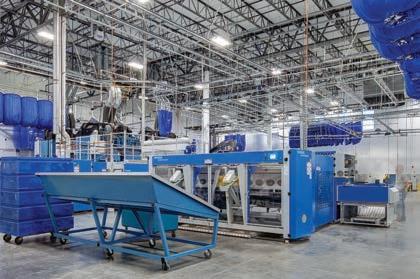
For O’Neill, the big “trick” to redesign of an existing operating facility is to find the “hole.”
“Every plant has one or if not, then you need to build one,” he says. “Expand an area where you can begin your work with little or no impact to the operation. Without this ‘hole,’ it is almost impossible, running the risk of downtime because the boiler room switchover went a day or two longer than expected. Murphy’s Law applies here more than any other situation.”
By limiting the impacts to the plant and taking advantage of a hole or the building/expansion of the ‘hole,’ O’Neill says a laundry operation can go through every department and replace/upgrade equipment, adding a level of automation for a facility that operates well for another 10-20 years.
“Low ceilings do not accommodate conveyor systems, so that’s probably one of the most important aspects of a new plant, whether it’s a retrofit or building from the ground up,” Spence shares as an example. “If and when we retrofit, we always try to find a building that’s got adequate ceiling height.”
DESIGN
For Kwasnick, building a new facility is driven by the same criteria: space, capacity and cost. When the existing laundry cannot meet customer demands and expansion is not viable due to lack of space, inability to meet future capacity needs, or expansion is not cost effective, then it’s time to build a new plant.
“I once had a client tell me, ‘When I’ve done everything I can to squeeze every last drop of productivity and capacity out of my existing plant, and it still consumes more time, energy, and resources than it produces, it’s time to build a new plant,’” he shares
“Here is this case where a decision is made to build new only after long hours and many days or weeks of exploring every other option, and you are absolutely sure that this is the best route to go down for you and your company, then by all means, full steam ahead,” O’Neill says.
He goes on to say that the decision to build new usually
comes down to possibly needing a second facility to back up the first. Maybe the operation needs a location closer to its main customer for 5 million pounds, along with the opportunity to chase more business.
“The availability or lack of availability of utilities is probably the number-two reason to go build, that and the inability to expand the current building,” O’Neill says.
“Then of course there are the employees and the turnover that every laundry suffers from. If the plant is a constant swinging door, then fix this before you expand, build new, add more hours, more pounds or more equipment. More poundage is not the answer. It will eventually, if left unchecked, kill your plant and you will lose those valuable customers.”
Alexander says that when a laundry operation decides to build new, considerations include selection of architectural, engineering, and project management; design, construction and equipment companies; as well as site, environmental conditions, demographics, utilities, public transportation, regulatory, taxes and economic incentives.
Laundries processing more than about 35 million pounds
O’Neill agrees that a big advantage to building new is designing the plant without any restraints in shape, height, size, etc.
“The freedom of having a blank piece of paper and building your dream facility with little or no constraints is the biggest attraction to building new, bar none,” he says. “But watch out for the hidden fees and the surprises. Impact fees can be considerable. Availability of utilities can be a very cost prohibitive.”
EXPERT ADVICE
So, what would be a key piece of advice from the experts when it comes to the design/redesign decision?
“First, I would discuss their project goals and their budget,” Kwasnick says. “What are you trying to accomplish and how much do you want to spend? These two criteria are highly correlated, and one can help define the other.
soul for the next 12-18 months (average time frame).”

produce economies of scale that cannot be achieved in significantly smaller plants, he goes on to say. Therefore, new facilities are typically developed to provide high ceilings and adequate space to process 35-plus million pounds.
To minimize project costs and maximize ROI for a new plant, every cubic foot needs to be used effectively, Kwasnick points out.
“The nice thing about building new is you have very few starting constraints,” he says. “You basically have a blank canvas.
“You can make the clear height as tall as you want to incorporate automated rail systems. You can use mezzanines for storage or equipment to minimize the size of the building. You can support the rail system from the build structure to eliminate additional support columns.
“You can keep the mechanical room adjacent to the wash floor and the finishing department to reduce the length of your piping runs. This not only reduces project costs, but also decreases heat losses in the process piping ,which helps reduce operating costs.”
“What we did was the things that we liked and didn’t like about the old plant we incorporated those things into the design,” Spence shares. “One of the primary things we did is we separated our acute care processing from our specialty medical processing. Same building, but they’re completely separated, and they have a shared power plant system.”
Another consideration Kwasnick points out is being mindful of future expansion. He recommends taking the time with a new build to think about how to effectively expand in the future.
“Make sure you can expand your plant without interrupting the operation,” he suggests. “Because the last thing you want to do is shut down your plant when it’s operating at max capacity 16 hours per day, seven days per week.”
Based on its success in St. Louis, Spence says Faultless took growth into consideration in designing its new plant. The facility has space for a second tunnel washer, another bank of dryers and additional floor and rail capacity.
“We just didn’t want to box ourselves in,” he says. “There is still a fair amount of business that is serviced by competitors that are far outside metro St. Louis, and that puts a strain on delivery, and we want to be there. We want to expand geographically, but we want to be there for the opportunities that will arise that are still within St. Louis.”
“For example, if a company has a limited budget, then building a new plant may not be viable and pursuing that option would waste time and resources. Therefore, we would focus on how to expand their existing facility in a manner that hits the goals they are looking to achieve while simultaneously meeting their budget.
“At the same time, a client may want to expand or renovate their existing facility, but they cannot meet their goals due to existing constraints such as limited space, low ceiling height, utility restrictions, poor labor market and other factors. In this case, a new plant may be the best option.”
O’Neill would first highlight the major pros and cons of each option. Then, he says he would evaluate the existing facility.
“We would then start to build the ‘pros and cons’ spreadsheet so we can score the reasons accordingly,” he says. “Finally, we weigh up this matrix and hopefully make a decision. This is easier said than done, I might add. Everyone analyzes to the point of paralysis. This can take a long time to overcome or it can be done quickly by someone who trusts the data in front of them.
“More often than not, it takes a few weeks of painstakingly reviewing the data and spreadsheet and then the light bulb will go off one day on the drive to work. Then hold on to your hats because if you have never built a facility in your life, then prepare for it to consume you heart and
Alexander says that, generally speaking, when laundry facilities reach the end of life of major equipment in 20-30 years, and the laundry is able to consolidate between 35-50 million pounds annually, a new facility is more viable then retrofitting and expanding. However, there are a lot of variables and each case deserves careful study of the alternatives.
“Giving due weight and consideration to all these issues will result in effective conceptualization of the project, which is the most important step in the process,” shares Miller.
Spence suggests a laundry operation looking to design or redesign tap into equipment vendor resources that are available and ask a lot of questions.
“What’s worked, what has not, do you provide capacity consulting services and ask to see operations that they’ve been involved with,” he says. “Go on as many plant tours as you can that those vendors can get you in to see not only for their equipment, but also the design of the plant.
“And then you have to decide: are you going to try to go this alone in conjunction with the equipment vendors, or are you going to try to get an outside consulting service that does the whole turnkey operation for you?”
Miller says an experienced project manager can take the professional engineers and equipment suppliers to completion of the project. However, the end product must meet an operation’s needs efficiently and effectively for years to come.
“The most important thing is to be creative, consider all your options, develop realistic cost expectations and fully commit if the project makes sense both strategically and financially,” says Kwasnick.
8 JUNE 2019 | AMERICAN LAUNDRY NEWS www.AmericanLaundryNews.com
ALN
Continued from Page 6
Design
Faultless needed adequate ceiling height for its advanced conveyor system. (Photo: Jeff Wellman)
“THE NICE THING ABOUT BUILDING NEW IS YOU HAVE VERY FEW STARTING CONSTRAINTS.”
—ED KWASNICK, ARCO/MURRAY
When dealing with laundry stains, your reputation rides on getting the outstanding results The Laundry Two deliver. RiteGo® laundry spray spotter quickly penetrates to absorb collar & cuff stains, perspiration, ground-in soil and more, all without brushing. Turn to Laundry TarGo® to remove any tough oil based stains that remain behind.

Use The Laundry Two with confidence on shirts, wedding gowns... anything you're washing or wetcleaning.
Both Laundry TarGo and RiteGo are chlorinated-solvent free, biodegradable, noncombustible and California 2013 VOC and Prop-65 compliant.
Use them to deliver stain-free laundry and wetcleaning. You'll build your reputation for quality - which is what keeps customers coming back.
FROM COLLARS AND CUFFS THE LAUNDRY T WO ™ ARE RIGHT FOR YOU! TO THE REALLY TOUGH STUFF... FROM COLLARS AND CUFFS THE LAUNDRY T WO ™ ARE RIGHT FOR YOU! TO THE REALLY TOUGH STUFF... To learn more, visit ALWilson.com or call 800-526-1188 A. L. WILSON CHEMICAL CO.
a STAIN WIZARD at ALWilson.com
Become
Consolidate



from Page 1
laundry and linen service is still a very local service. In response, national and regional companies in both healthcare and hospitality are making acquisitions across markets in response.
FAIRBANKS: Fear of the unknown. Change, even when positive can be frightening. Advance preparation always helps. The duality of managing new and current customers can be a challenge, but management also must deal with their team’s challenges with the new situation.
RICCI: Consolidation, particularly among large, national companies such as Cintas’s acquisition of G&K Services and Aramark’s acquisition of AmeriPride Services, creates opportunities for regional companies to grow. During the past two decades, consolidation has mostly impacted the uniform rental market.
However, the recent influx of outsider investment such as private equity (PE) into the market has been focused on hospitality, or laundries providing services to hotels such as PureStar, and bulk healthcare, such as Emerald. TRSA estimates there are less than 400 substantive laundry companies in North America, or organizations with revenues exceeding $1 million with most of these companies in linen supply, a sector that has had the least amount of consolidation.




With the exiting of the baby boomers from business, we are seeing younger, next generation leaders at both laundries and suppliers who are investing in technology and growth.
According to the Census Bureau’s Statistics of U.S. Businesses (SUSB) annual survey, the impact has been relatively level over roughly the past decade. The SUSB figures for 2016, released in December 2018, show 963 firms in linen and uniform supply, down from 1,105 (13%) in 2011. That 2011 total was a 12% drop from 2006. This represents more of a smallbusiness entrepreneurial churn than one involving the typical large-scale operations that characterize the long-term players in our market.

More than 70% of the companies that dropped in each of these time frames had 20 employees or less. The decrease in companies with 20 to 99 employees was much less, just 10% of them from 2005 to 2011 and 13% from 2011 to 2016.
In that most recent time frame, the 100to 499-employee sector grew (122 to 126 companies) and the 500-plus sector was level at 46 companies. This suggests that some companies’ growth has prompted them to add employees, moving their companies into the next employment category, replacing the relatively few in these upper categories that ceased operating.
With larger operations buying smaller ones, is quality and service affected? Is less competition raising prices?
CORFIELD: Quality and service are subjective, and the size of a plant does not assure either element. Quality and service are management driven regardless of size. Pricing is another thing, and we are seeing

With proper management, laundry operation quality and service can remain high with consolidation. (Image licensed by Ingram Publishing)
a trend that these consolidations should see prices begin to rise.
There is a case to be made that linen service pricing has been greatly depressed and is at the core of recent closings and group sales. Larger linen service companies are failing due to lack of internal investment and poor decisions made to retain customers. The current profit and revenue in most markets are not sustainable in the face of rising labor, and plant costs and company or plant size is no longer a guarantee of operational security for customers.
FAIRBANKS: Just because a laundry operation becomes larger doesn’t mean that service and quality will be impacted negatively. But this is a concern that needs to be addressed between the laundry and its customer—and here, actions speak louder than words. So, if those concerns do surface, laundries must be attentive.

ALM has both laundry processors and their customers, the hospital linen managers, in our membership. We do continue to hear of quality concerns frequently from the customer, and often their dismay that they truly no longer have a choice in providers due to the consolidations and/or closings.
RICCI: Often quality and service depend on local management, regardless of the size of the organization. People continue to buy from people, and while price continues to be a factor, we are seeing renewed focus on customer service.
In the industrial sector, the most recent quarterly survey from industry investment analyst Robert W. Baird & Co. shows new business pricing remains competitive, but improved from the previous quarter, the strongest in four years. However, Baird still describes such pricing as holding negative, reflecting an inherent negative bias that has been consistent for years.
Existing accounts trend positively in base pricing. They moved higher in the first quarter of the year, with around 60% of survey respondents reporting 2% to 4% growth. On the linen side, it was roughly a 20%/50%/20% split between improved, no change and lower. For existing accounts, more than nine in 10 reported increases or no change (47%/46%) while the remaining 7% indicated they’d made concessions.
I don’t think we can cite consolidation as the reason for these nominal pricing gains. Competition still abounds and necessitates improved service that customers believe is worth paying for.
With private firms involved in some purchases, have you seen any effect on the industry, in particular with firms that
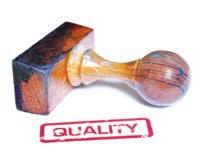



BETTER FOR TEXTILES BETTER FOR THE ENVIROMENT BETTER FOR THE BOTTOM LINE Without NUpHASE PRO For more information call 1 (800) 442-4360 or visit us at, www.norchemcorp.com NO-ALKALI WASH CHEMISTRY AVOID THE HIGH COST OF ALKALINE HYDROLYSIS VISIT US AT BOOTH #1321 2019 NEW ORLEANS, LA CLEAN JUNE 20-23
See CONSOLIDATE on Page 12
Continued
10 JUNE 2019 | AMERICAN LAUNDRY NEWS www.AmericanLaundryNews.com
Fairbanks
Ricci
The following companies and organizations reserved exhibit space in the Ernest N. Morial Convention Center, New Orleans, for Clean 2019 during the 30-day period ending May 6, according to show manager Riddle & Associates.
At press time, the total number of exhibitors was approaching 440 (see our Clean 2019 Show Guide issue published in May for the initial list); it’s possible more exhibitors will be added in the final weeks leading up to the June 20-23 event.
Where available, the descriptions of products and/or services provided here are general in nature and should not be considered all-inclusive.
Listings are subject to change without notice. Check www.cleanshow.com for any updates.
A.I. Care LLC 1109
Boutique organization focusing on providing healthcare solutions to healthcare facilities and individuals.
C
❏
ClickHeat 4904
Reusable instant heat packs.
E
with RFID route building. ❏ Mayfield Group 1208
Advertising Bureau
Advertising and marketing services for dry cleaners and laundries. ❏
My Shoe Hospital 4906
Shoe repair service.
❏
Eagleby International 4920
Supplier of laundry and drycleaning consumables, including poly bags/ film, hangers, paper products and pins.

❏
G

GoDaddy Social 4111
Social media networks management.
H
Newhouse Specialty Co. 4874
Maker of specialty products for the laundry, drycleaning and garment manufacturing industries. ❏
Ningbo Dasheng Daily 4919 Products Co. Ltd.
Manufactures plastic and wire laundry hangers.
❏
❏
Harmony Cleaning Systems 3765
Professional wetcleaning system.

Highland Capital Corp. 4911 Equipment financing solutions.
I
Suzhou Lingwei Textile Inc. 1210 ❏ SWECO 4905
Vibratory separators for laundry applications.

❏
IPA 4901
Automated surgical scrub and linen dispensing equipment for healthcare providers.
J
❏
Jiangsu BE-SAFE Medical 4921 Technology Co. Ltd.





Research, production and sales of protective medical textiles, including reusable surgical gowns and surgical drapes.
Mat Master Technology LLC 4900
Mat processing system
Tecni-Quip Carts 2603 Laundry carts. ❏
Tektem Makina San. 4908 Ve Dis Tec. Ltd. Sti. ❏
TexTrax 4912
Software for laundry operations, linen management and route accounting.

Vendors Exchange 1111
Vending equipment and parts. ALN
www.AmericanLaundryNews.com AMERICAN LAUNDRY NEWS | J UNE 2019 11 RECOVERS UP TO 90% OF WASTE WATER RECOVERS UP TO 90% OF WASTE WATER HEAT DECREASES WATER, SEWER & ENERGY COSTS For more information call 1 (800) 442-4360 or visit us at, www.norchemcorp.com UNMATCHED COST SAVINGS IN WATER RECYCLING ® VISIT US AT BOOTH #1321 2019 NEW ORLEANS, LA CLEAN JUNE 20-23 CLEAN ’19 LA TE ST E XHIBITOR A DDITIO NS
A ❏
M ❏
N ❏
S ❏
T ❏
V ❏
(File
American Trade Magazines)
photo:
have no laundry/linen experience?
CORFIELD: We continue to see a strategic focus from these firms that look at market opportunity and processing capacity to meet that focus. Some appear to understand the capital required, while others clearly have not.
This is a business of managing details to create success in both quality and profits. PE firms that fail to understand that will not be successful in our industry, as recent events demonstrate.
FAIRBANKS: Every situation has its own unique path and that is typically dependent on the goals of the private firm. Is the goal buying to sell over a short-term, say three-year, investment for a 25% a year return then sell, or is their plan for an investment strategy with an initial 20% a year return for the first three years, with a continued moderate return of 10-12% a year thereafter?
There are pros and cons to private firm investments and time will tell the impact of their efforts to improve the profitability or making these companies a healthier business. Hopefully they will learn about the industry, but the practices of other industries have brought positive change to the way laundries operate. Look at what the just-in-time and other Six Sigma concepts from the auto industry have done for improved laundry efficiencies.
RICCI: The recent increase in equity firms’ involvement, especially in the healthcare and hospitality/hotel sectors, have generally retained plant and senior management. They have recognized the importance of having experienced, professional management that understand the business. While laundry may not be complicated, it is complex.

Many of these investors also understand the value of participation in TRSA, recognizing the value of industry advocacy and collaboration between competitors to improve best practices. In previous consolidation cycles, especially with nonlaundry investors, membership has shrunk, and renewals dipped. This is not happening. TRSA recently earned its highest North American operator renewal rate in nearly 20 years with 94% of members renewing for 2019, and despite consolidation, we continue to grow by more than 10% annually.
We believe outside investors will continue to look to the linen, uniform and facility services industry’s ability to outperform the economy (GDP) and potential to experience substantial ROI from automation, more will become involved.
How is laundry consolidation impacting vendors and suppliers in the industry?
CORFIELD: With acquisition there is a focus on plant improvement, and the industry is very busy at the moment. The number of projects is considerable, across the country and across markets.
Timelines to build and the cost of capital projects has risen, as has the cost of textiles.
Price to build or retrofit laundry plants has risen with the level of automation operators are seeking to combat rising labor cost and labor availability in certain markets.
FAIRBANKS: We have seen vendors and suppliers reduce their workforce in preparation for a reduced number of buyers in the marketplace—and consolidations of distributorships to better serve their customers.
RICCI: To some degree, buying power has consolidated, leaving them with fewer ultimate decision-makers. On the other hand, more individuals on company management teams than ever have an impact on decision-making, including general managers and other plant-level management. As companies grow, their highest-ranking corporate executives rely more on other executives to evaluate purchasing options.
The greatest impact on our industry’s suppliers from consolidation was probably felt prior to this decade by suppliers of uniforms when more of the larger regional operators who didn’t manufacture their own uniforms were acquired by national/ international operators who do.
As has been mentioned, consolidation is also taking place in markets (i.e., hotels, healthcare, etc.). What have you observed in the laundry/linen services industry as mergers and purchases have taken place?
CORFIELD: When service and quality are not met, end users begin seeking to build OPLs or self-serve plants again. The problem for customers of the service and linen companies alike is talent. The industry is challenged with low wages and a lack of talent to operate automated plants at a level to sustain cost or service. The cost to build plants has risen dramatically and the experience to run them is not readily available
FAIRBANKS: A heightened focus on efficiencies and need for uniform industry measures to better gauge a laundry’s performance and to provide a tool to identify opportunities for improvement.
RICCI: Market consolidation and the growth of chain restaurants has driven an increase in national accounts. We’ve seen laundry operators forming more alliances, especially in the healthcare and uniform sectors, to provide greater national coverage.
Market consolidation is also driving industry consolidation and investment in the hospitality and out-patient medical, such as surgery centers, medical offices and long-term care facilities.
SPENCE: A few things come to mind when thinking about healthcare system consolidation.
Ultimately, it means fewer opportunities for smaller one- or two-plant operators.
As these systems grow and the local community hospital becomes a thing of the past, large multi-state linen services will be the only real options.
It is worth noting that consolidation is still a bit of a regional occurrence at this point. Some parts of the country are dominated by one or two large health systems, while other parts are still serviced by more regional health systems. I do believe that consolidation is going to continue, and if it has not affected your area yet, it will.
A couple of years ago I attended a “state of the system” meeting at one of the few independent community hospitals left in my area. Chatting with the presenter after the meeting, he indicated that consolidation is going to continue and to expect to see the regional two- or three-hospital systems affiliating with the larger multi-state operations.
One strategy many local laundries pursued in the past was to focus more on retail medical, such as clinics, surgery centers and family practices. More recently, we are seeing even these types of facilities acquired by the big health systems. It can be difficult to even find an independent, non-affiliated family physician in many areas. These offices now tend to get their laundry under the same contract that serves the entire system.
Even with consolidation, competition still exists in the industry, so price increases are nominal. (Image licensed by Ingram Publishing)

can promote their sustainability against them.
What is the major issue for the laundry/ linen services industry when it comes to consolidation?
I do think that opportunity still exists for the local providers in personal care and skilled nursing. These types of facilities remain largely independent. The sales process can sometimes be difficult here, as it often entails convincing facility administration to close their on-premises laundries.
How have you seen operations deal with consolidation in the marketplace?
CORFIELD: PE firms and successful linen service companies are purchasing plants in response to the opportunity of these market consolidations. Plants are being purchased based on location and ability to expand or with solid management teams that can fuel growth.
FAIRBANKS: The laundries sometimes have the opportunity to secure additional experienced workforce, which is a win. Plus, there are also opportunities to acquire equipment from an operation that is closing.

But the challenges come when there is short notice for the transition. In the healthcare marketplace there have been concerns over the emergency back-up options available. These are discussions that hospital management needs to have. Even though the hospital’s laundry may not have closed in a consolidation, if the closed operation was the emergency back-up, what now? You don’t want to wait until the emergency occurs to discover the problem.
RICCI: Suitors who acquire operations face the challenge of integrating operations, retaining customers and melding cultures regardless of whether the acquisition is local or national.
Consider the federal Securities and Exchange Commission’s deliberations on the Cintas acquisition of G&K Services, which closed in 2017. Observers predicted that because consolidation had already affected so many local markets, especially those where both companies operated, that the potential merger may be in jeopardy. That proved not to be the case.
With nearly 400 uniform rental/industrial laundry companies operating 1,800 laundry establishments, there is still plenty of competition and opportunity. Established local competitors facing newly consolidated competitors in their market sometimes welcome such combination because they
CORFIELD: Locations with available labor pools, experienced management and service teams to sustain and drive that growth, and capital to expand. These elements are not new to our industry. But as plants close or change hands and volume consolidates, there is a chance for profits in our industry to grow, which is what the PE firms and regional private companies are betting on.
RICCI: Many TRSA members do not view the biggest competition to be other laundries; they see bigger challenges from employees purchasing their own workwear at Walmart or online and disposable alternatives to reusable textiles, as well as the economy and energy prices.
Baird and other analysts remain confident that the industry will continue to grow faster than GDP with opportunities to increase the U.S. market from $20 billion to $34 billion by focusing on nonprogrammers.
Since joining TRSA more than nine years ago, I have visited with nearly 300 members, both laundry operators and associate suppliers, and their biggest issue is the availability of labor.
Will industry revenue continue to increase faster than GDP? While operators of all sizes grow, the larger multi-plant operators usually lead the pack, investing heavily in sales and marketing and positioning their services as a strong value. They leverage their massive economies of scale, running increasingly automated facilities at optimal capacity. That leverage increases when they acquire competition.
Will technology continue to evolve enough to provide them with increasing efficiencies, playing enough of a role as in the past to increase ROI and support their profitable growth? Or will they need to rely more on acquisitions?
How much does the next generation of families in the business want to stay in the game? Looking at the more stable segment of the industry (companies with 20-plus employees), a very large percentage are family businesses. Faced with the option to cash out by selling the business or to continue in a highly competitive market, how will young executives react?
Based on the interest in our Young Executives and Emerging Leaders programs, we are optimistic that the next generation currently in the sweet spot for business sustainability (100-plus employee companies) are seeing plenty of good reasons to stick around.
12 JUNE 2019 | AMERICAN LAUNDRY NEWS www.AmericanLaundryNews.com
ALN Continued from Page 10
Consolidate
Spence
Corfield
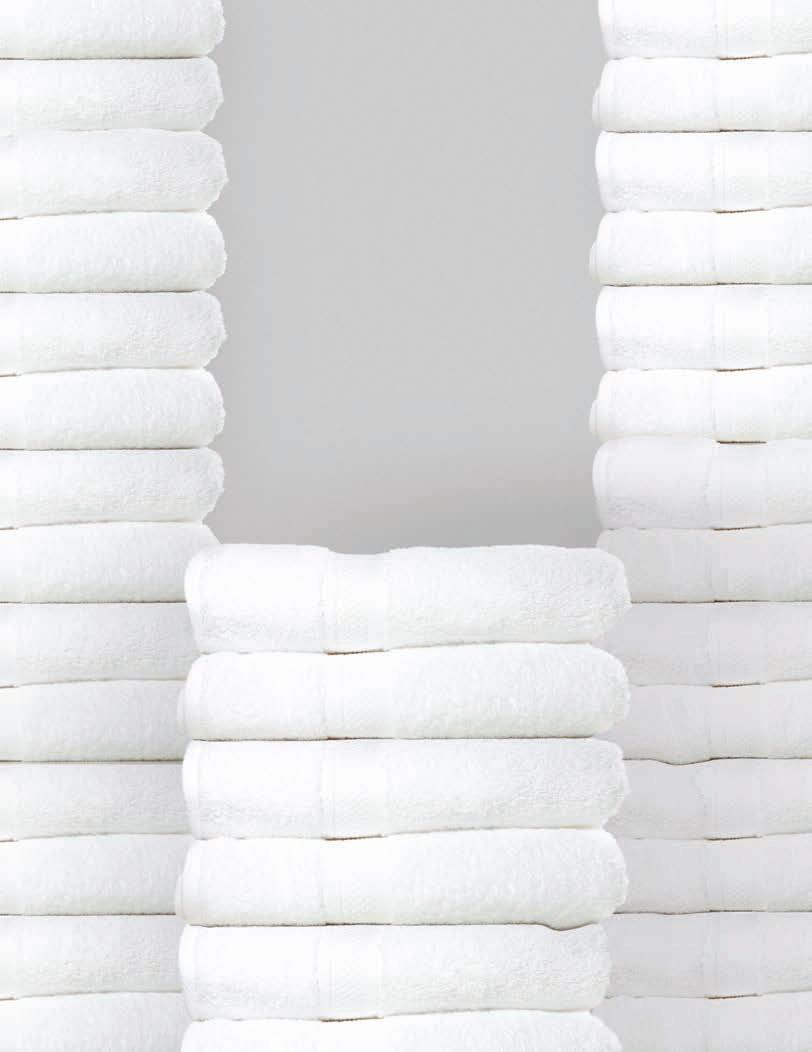




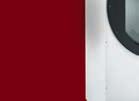
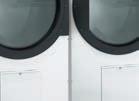



Financing as low as 4.99% for up to 36 months.* CONTACT AN ADC™ DISTRIBUTOR TO LEARN MORE OR VISIT ADCLAUNDRY.COM Trust Your Linens With ADC™. Machines designed to help streamline your laundry facility’s throughput. ®/™ ©2019 ADC. All rights reserved. *This promotion is valid April 1, 2019 – June 30, 2019, and rate may vary depending upon individual credit profile. This promotion is valid for applications received by June 30, 2019, and funded by August 15, 2019.
Demystifying microfiber
Workhorse product has revolutionized cleaning around the world, author says
BY NANCY JENKINS
SHAWNEE MISSION, Kan. —
When microfiber cleaning products—mops, pads and cloths— were first offered in the 1990s, objections on cost rapidly gave way to rave reviews for their cleaning ability. Today, the effectiveness of cleaning methods that employ microfiber products is undisputed by environmental service professionals in healthcare, hospitality, and industrial settings.
No doubt due to their effectiveness and significant market share, reusable microfiber products have drawn the attention of disposable manufacturers. Indeed, you or your clients may have read one of several articles published in recent years that portray disposable microfiber products as more effective than reusable. It’s the classic reusable versus disposable debate. But what is true or false?
This article offers background and outlines the facts on reusable microfiber products.
WHAT IS MICROFIBER?
By definition, the term microfiber applies to fibers measuring 1.0 denier or less (but greater than .3 denier). Microfiber is composed of polyester and/ or nylon (polyamide) fibers split many times smaller than a human hair or half the width of a silk fiber.

All microfiber is currently manufactured in China. The manufacturing process is complex, which means it can cost as much as 30% more to make than traditional cotton cleaning cloths.
Microfiber is knitted or woven and consists of two main types: splitable and straight filament. Straight filament microfiber is made from 100% polyester and used in clothing, furniture and other applications. It is not designed to be absorbent, just soft.

Splitable microfiber is created when polyester and polyamide (nylon) fibers are heated and combine to form a single thread.
Split microfiber is characterized by wedges rather than the rounded threads found in other yarn. These wedges give microfiber the ability to collect microscopic particles from surfaces. And the capillary action of the fine threads dramatically increases the absorbency of microfiber.
HISTORY OF MICROFIBER
Microfiber was first developed in the 1950s when technology allowed for the extrusion of polyamides. However, only random lengths could be manufactured and few applications were found until the 1960s when Dr. Miyoshi Okamoto and Dr. Toyohiko Hikota discovered a way to produce ultrafine fibers of continuous filament.
Among the first products was Ultrasuede, introduced to markets in the 1970s.
Microfiber products for the textile services industry were first publicized in the 1990s in Sweden, and its popularity spread across Europe over the next decade before gaining a foothold in the United States.
BENEFITS OF MICROFIBER
The fineness of microfiber is what allows it to penetrate cracks that cotton or paper towels can’t. The increased surface area of the fibers allows microfiber to absorb up to six times its weight in soil or liquid. In addition, the dry fibers generate an electric charge when in contact with a hard surface. This electric charge attracts and contains dust, rather than spreading it around or releasing it into the air.
Indeed, studies on microfiber cleaning products reveal that when microfiber is used to clean a floor, bacteria is reduced by 99% (EPA Environmental Best Practices for Healthcare Facilities, “Using Microfiber Mops in Hospitals,” Nov. 2002) compared to a 30% reduction when cottonloop mops are used.
In addition, the use of microfiber cleaning products reduces:

• Chemicals and water: Both the U.C. Davis study and another by the University of Massachusetts Lowell study (Sehulster, L., “Healthcare Laundry and Textiles in the United States: Review and Commentary on Contemporary Infection Prevention Issues,” Infection Control & Hospital Epidemiology, 36(9), 1073-1088. doi:10.1017/ ice.2015.135) determined that a microfiber mopping system requires 95% less water and fewer chemicals.
• Cleaning times for patient rooms. Conventional wet mopping practices—including mopping the floor, preparing and changing the cleaning solution, and wringing the mop before and after jobs— take approximately 15 minutes for a typical patient room. The study by U.C. Davis showed a 20% reduction in staff cleaning time.
• Custodial staff injuries and workers’ compensation claims. A conventional wet mop weighs five pounds more than a microfiber mop. And a bucket of cleaning liquid weighs as much as 30 pounds. When using microfiber, staff is not changing cleaning liquid for each room cleaned. These advantages can help reduce cleaning staff injuries through
repetitive motions of mopping and wringing.
• Costs. While the cost of investing in a reusable microfiber program is as much as three times more than a traditional mop program, when all costs are compared (product, chemicals, water, electricity and labor) a microfiber program is more cost effective. The U.C. Davis study found the cost to clean 100 rooms using microfiber products was $470 versus $497 using traditional products. In addition, a reusable microfiber mop is typically guaranteed for 500 turns, versus a cotton-loop mop that last approximately 55 uses, or a disposable that issued once and landfilled. Reusable microfiber programs eliminate waste disposal costs.
Given the benefits of using microfiber cleaning products, why the controversy surrounding reusable versus disposable microfiber? Consider sharing these facts with your clients.
THE FACTS
Reusable microfiber products clean effectively and do not spread healthcare-acquired infections (HAIs). The CDC has reviewed the history of HAIs attributed to reusable textiles of all kinds and reports that such events are extremely rare and when they have occurred are related to contamination after laundering or to deficiencies in the laundering process (Desa, J., Bello, A., Galligan, C., Fuller, T., and Quinn, M., “Case Study: Are Microfiber Mops Beneficial for Hospitals?” Safe Home Care and Hospitals Program, Department of Work Environment, University of Massachusetts Lowell, 2004).
The CDC further concludes that current infection prevention strategies for laundering and handling healthcare textiles (HCTs) appear adequate in preventing HAIs, provided that launderers follow industry best practices for processing textiles as outlined by the Association for Linen Management (ALM), the Healthcare Laundry Accreditation Council (HLAC) and TRSA Hygienically Clean.
Reusable microfiber wipes are only as effective as the selected chemical disinfectant and stipulated cleaning process. Most facilities decide by committee which EPA-registered disinfectant will best meet any microbial challenges faced. However, different microbes react differently to disinfectants, and dwell times will differ for each when it comes to killing organisms. Therefore, it is critical that staff using microfiber cleaning products closely follow instructions from the selected manufacturer regarding chemical concentrations and dwell times.
Improperly laundering microfiber products will reduce efficacy. Microfiber products will become damaged and not work as effectively if improperly processed. Microfiber should be washed separately, should not be washed using bleach, fabric softener, or high temperatures (no higher than 60 degrees). Finally, dry microfiber products using low or no heat— high temperatures can melt microfibers. Do not iron microfiber. Microfiber is not responsible
for polluting our oceans. A recent tactic of disposable microfiber suppliers is to position the laundering of reusable microfiber as contributing microfragments to water systems. The disposable alternative is to landfill disposable microfiber products for generations to come. The reality is that quality microfiber products are extensively tested for use in many industries, including cleanroom manufacturing.
According to George Clark of umf PerfectClean, microfiber bicomponent splitable filaments are made of polymers, typically polyester (PET) and even more durable polyamide (PA). Unlike cotton and other cellulosic fibers, which are very short fibers and a major contributor to micro-fragments in water systems, PET and PA are man-made continuous filaments that are very durable.
He suggests we also consider that micro-fragments of all kinds of fibers have many sources, from vacuum bags and their contents to discarded paper towels in landfills to non-woven materials (e.g., spun bond, spun lace, hydroentangled, etc.) used to make all the supposedly “flushable wipes” that are clogging public sewer systems worldwide.
Not all reusable microfiber is created equal. Quality counts. When deciding on a microfiber product, cost typically correlates directly to quality. For cleaning purposes, always buy split microfiber, which is composed of a polyester/polyamide blend (for better cleaning performance look for a higher percentage of polyamide). In addition, the denier should be less than 0.5.
An easy test for checking quality is to hold the cloth up to the sunlight and stretch the cloth. If the weave is tight and you don’t see a lot of sunlight, it’s a higher quality cloth.
CONCLUSION
When a reusable cleaning product as revolutionary as microfiber provides so many benefits—excellent at cleaning, cost effective, and reduces labor costs and injuries—it is bound to attract detractors. Such is the case of manufacturers of disposable microfiber who strive to make a case against reusable microfiber products. ALN
Nancy Jenkins is the principal of Jenkins Integrated Marketing and the executive director for the American Reusable Textile Association (ARTA). ARTA recently formed a committee to battle misinformation regarding microfiber products. For more information: njenkins@ARTA1. com, www.ARTA1.com.
14 JUN E 2019 | AMERICAN LAUNDRY NEWS www.AmericanLaundryNews.com
The dry fibers generate an electric charge on a hard surface, attracting and containing dust.
A microfiber mopping system requires 95% less water and fewer chemicals.
Microfiber’s structure gives it the ability to collect microscopic particles from surfaces. (Photos: umf PerfectClean)





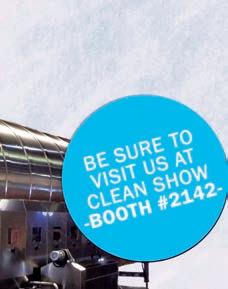
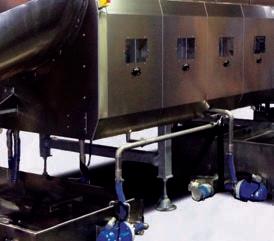



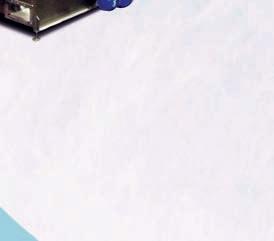




THE DEFINITION OF THE VEGA SMARTLINE BATCH WASHER MEISTERSTÜCK SUPERIOR DESIGN IS WHAT VEGA IS KNOWN FOR AND THE REASON VEGA SYSTEMS GROUP IS THE FASTEST GROWING MANUFACTURER IN THE INDUSTRIAL LAUNDRY INDUSTRY. CALL NOW FOR A FREE ANALYSIS WWW.VEGASYSTEMS-GROUP.COM 855-834-2797 ENGINEERING YOUR FUTURE
Effective commercial laundry marketing
Tips for getting more bang for your laundry marketing buck
BY KIM LODERBAUER
OSHKOSH, Wis. — Marketing means money out of pocket, but it’s essential to the revenue growth of your business.
So, when making a marketing investment, be sure you get your greatest possible marketing exposure and return on investment. Check out the following tips to make the most bang.

PARTNER WITH A COMMERCIAL LAUNDRY MARKETING FIRM
If you elicit the help of an agency, be sure they know the commercial laundry industry. At the end of the day, your marketing dollars will be effectively utilized with an agency that understands the industry and your market. You’ll save time and money not having to educate them on the industry and tap into a more effective use of your money.
Marketing agencies that specialize in the laundry industry can more efficiently provide marketspecific equipment photos, graphics, images, artwork and content. They have on-staff creative directors, developers, writers and designers who truly understand your business, and as a result, provide marketing options that get results.
CROSS MARKET ON MULTIPLE PLATFORMS
If you create a marketing piece, use it everywhere possible. If you distribute a press release to the media, be sure it’s also posted to your website’s news page and shared on social media. If you have a photo shoot, use the photos on your website, ads, direct mail and brochures.
Repurpose website content.
Perhaps you can use a portion of content detailing your energyefficient equipment for a mailer or social media blurb. Always consider how any bit of marketing can be repurposed. If you do, you’ll get more bang for your marketing buck.
ONE VIDEO, PHOTO SHOOT FOR ALL YOUR MARKETING NEEDS
Set up a day-long or half-day shoot with a professional videographer and/or photographer. Be prepared to capture any images and videos needed for use on all marketing platforms, including your website, direct mail, advertisements, social media, public relations, etc.
By capturing these in one sitting, you’ll save considerably in terms of time and money down the road. Here’s a list of shots to consider:
• Owner/management/employee head shots.
• Exterior plant images and video.
• Interior plant images and video.
• Customers interacting with staff.
• Staff using equipment.
• Closeups of high-tech equipment.
• End result images of neatly ironed and folded sheets, garments, towels, etc.
• Signage and delivery vehicles.
DIGITAL MARKETING
Create a database of customers from which you execute frequent digital marketing. Hubspot, for example, is an online software application that allows licensees to develop databases, send e-mails, build and edit websites, manage social media, drive traffic to key website landing pages, and more.
There are varying monthly licensing fees, depending on the user level selected, but even the most inexpensive offering provides valuable capabilities. It makes it easy to track the effectiveness of your digital marketing campaigns thanks to provided analytics and reporting.
SOCIAL MEDIA
It’s free and effective. Whether you utilize Instagram, Facebook, YouTube or Twitter—or all of them— social media is a great way to connect with your customers. Post messages, photos, videos, news and specials on a daily basis for best results.
PROFESSIONAL CONTENT WRITING
Once you invest in any professional content writing, reuse that content on other marketing platforms. For instance, if you hire a professional writer to put together the content for your website, you likely will be able to reuse portions of that content in social media, direct mail, brochures, etc.
By hiring a professional, you
will save time and feel good knowing that your messages are grammatically correct, speak directly to your target market, and in the case of website content, are written to maximize search engine optimization (SEO).
PUBLIC RELATIONS
Anytime you’ve got real news to share, produce a press release and distribute it to media outlets within your geographic area. It might cost between $100 and $300 per release for writing fees, but local newspapers and trade journals publish releases at no charge.
Published press releases bring credibility and virtually free advertising to your commercial laundry. Consider a press release to announce:
• Laundry grand opening.
• New hires (but only for higherlevel staff, like laundry managers).
• Significant philanthropic donations and activities.
• Major renovations and equipment upgrades.
• New service offerings.
DELIVERY VAN WRAPS
Use your pickup and delivery vehicles as moving advertisements. Invest in professionally designed wraps to envelop them. As delivery vehicles move along their routes, they’ll market your laundry’s services to other businesses and passersby.
A vehicle wrap allows you to spread your laundry’s message well beyond home base, and into areas thick with the customers to which you cater. ALN
A 20-year marketing guru, Kim Loderbauer works closely with commercial laundry owners and managers, helping them cost-effectively promote their businesses. She manages Continental Creative Services (CCS), an advertising and marketing agency serving the laundry industry. Contact her at kloderbauer@cgilaundry. com. Loderbauer

Aramark ranked a DiversityInc Top 50 Company for Diversity
PHILADELPHIA — Aramark, which provides food, facilities management and uniforms, reports it has once again been named a DiversityInc Top 50 Company for Diversity. The company was also recognized as a Top 15 Company for Philanthropy.
The DiversityInc Top 50 list, issued yearly since 2001, recognizes the nation’s top companies for diversity and inclusion management. These companies excel in such areas as hiring, retaining and promoting women, minorities, people with disabilities, LGBT,
and veterans.
“We are honored to be recognized by DiversityInc for our commitments to diversity and philanthropy,” says Eric Foss, chairman, president and CEO of Aramark. “Fostering an equal and inclusive workplace culture, centered around a shared purpose, is vital to meeting the needs of our team members, customers and communities, while also delivering on our mission to enrich and nourish lives.”
DiversityInc says its annual survey yields
an empirically driven ranking based on talent results in the workforce and management, senior leadership accountability, talent programs, workplace practices, philanthropy and supplier diversity. This year’s competition was improved by adding questions that connect talent programs and workplace practices to desired talent results.
The Top 50 analysis also addressed the intersectionality of race by analyzing women and men representation of each race/ethnicity separately, rather than combined.
“We revamped our algorithms and now have a reliability quotient of .92,” notes Luke Visconti, founder and CEO of DiversityInc.
“DiversityInc Top 50 Companies have a decisive advantage because they treat people more fairly than other companies. Everybody, including white men, are far better off working for them because there is more opportunity at better run companies. Top 50 companies also deliver a greaterthan-average return for shareholders.”
16 JUNE 2019 | AMERICAN LAUNDRY NEWS www.AmericanLaundryNews.com
(Image licensed by Ingram Publishing)
ALN
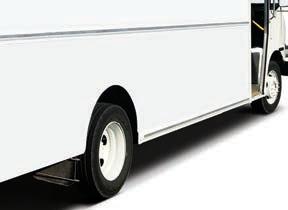



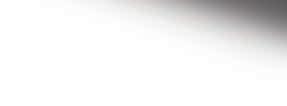
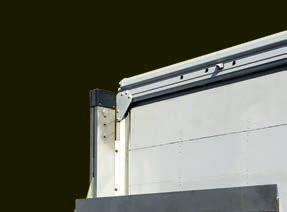
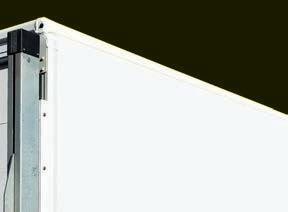


© 2019 Maxon Lift Corp. Call (800) 227-4116 or visit maxonlift.com When your linen and laundry customers count on you to pick-up and deliver on time, you can rely on the DMD Generation 2.0 liftgate to deliver MAX performance. Maxon’s next-gen DMD 2.0 replaces the chain drive with our advanced dual-cylinder, direct-drive technology, which increases productivity, reduces maintenance costs and keeps your operation running smooth. Light, strong and easy to operate, the DMD 2.0 delivers reliable, cost-effective and hassle-free service. Increase productivity with the leader in liftgates since 1957. Keep them in the clean, we’ll keep you in the green Visit us at The Clean Show BOOTH #1025
American Laundry Systems, turning 25, completes 100th build project

DERRY, N.H. — American Laundry Systems (ALS), based here, recently completely its 100th new laundry facility or retrofit/ build out.
ALS, which is turning 25 this year, says it handed over a com-

pletely renovated “space-age, industry-leading and one-of-a-kind” healthcare laundry facility to the Cleveland Clinic Foundation (CCF) management team on April 5.
“To all of those wonderful partners who worked days,

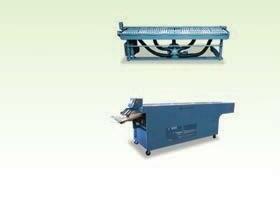
nights, weekends, holidays and did whatever it took to make this 60,000-square-foot plant one of the most technologically advanced healthcare laundry facilities in North America, if not the world, I want to say thank you for your

help,” shares Gerard O’Neill, president and CEO of American Laundry Systems, who also acted as project manager and prime consultant. “You should all be proud and stand tall with this accomplishment.”
He went on to express thanks to Deborah Laursen, owner of Lark-Laursen Consulting; John McCreary, owners’ representative/ CCF; Gerald Knotek, senior director of patient services/CCF; and Ralph Turner, executive director/CCF.
O’Neill also shares gratitude toward equipment providers Kannegiesser ETECH, Automation Dynamics, Kemco, Spindle, Leonard Automatics, and R.W. Martin, plus Evergreen Management, Elford General Contractors, and the many local sub-contractors that worked on the project.
“I am very proud of our team here in Cleveland, and I cannot say enough about the co-operative efforts from all involved,” he adds. “It takes a lot to bring a plant like this online and keep the facility running at the same time”
—GERARD O’NEILL,
The retrofitted facility is capable of processing 30 million pounds per year, according to ALS.
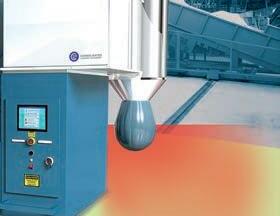


The company adds that special attention was given to providing the best laundry technology while adhering to the stringent regulations of CCF in-house standards and adherence to Healthcare Laundry Accreditation Council (HLAC) standards, TRSA’s Hygienically Clean standards, The Joint Commission on Accreditation of Healthcare Organizations (JCAHO) and the Centers for Disease Control and Prevention (CDC).
“The amount of duplication, alternate utility services, backup systems, IT systems, remote access log-in capabilities, building management systems, security systems, 100% air-conditioned environment and a 90-plus% level of automation on the equipment side sets this plant on a pedestal over and above the vast majority of the other plants in North America, if not the world,” says O’Neill.
“This is a plant that you ‘dream about building,’ and this is just Phase 1. Phase 2 starts in the summer of 2019 when, at the end of this phase, another 20-plus million pounds per year will come on board.”

Jr. Page 18 JUNE 2019 | AMERICAN LAUNDRY NEWS www.AmericanLaundryNews.com
ALN
Hands over renovated healthcare laundry facility to Cleveland Clinic Foundation in early April “Your dryers are long-lasting. The PLC control is easy to use, helping to reduce cycle times, considerably.” “CLM equipment has a good reputation: sturdy, reliable and e icient.” “I’m really happy with my CLMs; they’re more than 20 years old and they just keep running.” Since 1983, the CLM brand has delivered the most cost-e ective, most money-making shuttle conveyors, vacuum feeders,
From the Pacific to the Atlantic, customers rely upon longevity of CLMs Pomona, CA | T: (323) 232-2417| clmco.com Robustly engineered long-lasting DRYERS Smartly productive and safe MAT ROLLERS Intelligently e icient SHUTTLE CONVEYORS Quick and easy-to-use VACUUM FEEDERS Clever and fast TOWEL FOLDERS All CLM equipment can seamlessly integrate into any laundry facility. Made in USA CLM ALN JR Ad Aug 2018.qxp_Layout 1 8/6/18 5:39 PM Page 1 ALN_Jr Page.indd 1 8/7/18 8:44 AM See us at Clean Show booth number 2365 0119aln_CLM.indd 1 12/14/18 3:30 PM 3/14/19 PM
TAKES A LOT TO BRING A PLANT LIKE THIS ONLINE AND KEEP THE FACILITY RUNNING AT THE SAME TIME.”
mat rollers, towel folders and its mighty line of 200-1200 lb. dryers. Come to the brand where long-lasting and low-maintenance equipment is standard.
“IT
ALS
WHEN LESS BECOMES MORE
EvoClean




Less Maintenance. Less Waste. More Savings. More Confidence.


Named 2018 ISSA Innovation of the Year, EvoClean is the world’s first venturi-based, water-powered, chemical dispenser for on-premise laundry facilities. By eliminating the need for squeeze tubes, EvoClean delivers consistent performance and accuracy in a compact design while minimizing maintenance and significantly reducing waste. When combined with our Total Eclipse Controller, EvoClean accommodates up to 20 formulas and offers reporting capabilities on usage, production, costs and alarms. Learn more about how EvoClean can save you time, money and rewash at hydrosystemsco.com.



Visit Hydro Systems Booth #4321 at the upcoming 2019 Clean Show.

hydrosystemsco.com


(8OO) 543-7184

PANEL OF EXPERTS
Better soil sort, less stain/rewash
Since proper loading is necessary for efficiency and clean linen, Andrea made certain the soiled linens were in the appropriately sized bags to include light, medium, heavy and extra heavy.

Has this ever happened in your laundry? Regardless if your facility is healthcare, hospitality or other, I am sure you will agree there can be multiple issues and more than one solution.
As Andrea reviewed the daily report, the erratic numbers perplexed her. During the past couple of weeks, the numbers had been all over the board. While recognizing there should be an occasional spike or decline in the numbers, she was also seasoned enough to recognize the variance may be created from sorting, loading, chemical formulas or equipment challenges. Regardless, she was determined to locate the problem and find a solution.
She first made a loop around the entire floor as she had witnessed a consultant do several years before. The expert had stated he did not want to assume anything without first observing the entire process.

Andrea paid close attention to pre-sort and post-sort practices. She was aware mixed linens can be especially challenging, as something as minor as placing the pillowcases in front of the sheets can result in tangled goods. In the past, one of the problems occurred based upon positioning of the healthcare gowns.
Over the next several days, she spoke with individual staff members to include the maintenance engineer and the equipment operators. She was anxious to learn of challenges they may be experiencing. She observed their procedures and conversed with the individuals while providing coaching and kudos as applicable.
Andrea also wanted to make certain there were no unnecessary distractions and that quality and safety were not being sacrificed in order to generate the necessary production numbers.
She once again expressed to the team the formula must meet the weight and type of soil, which is critical for a good outcome. Emphasis was also placed upon weighing the goods. Under loading can be as bad as over loading, and it can also prematurely stress the laundry equipment and render inferior results.
The facility had a mix of laundry equipment to include washer-extractors, tunnel washers and finishing equipment. She confirmed the equipment was operating well and confirmed “planned maintenance” was being performed on a consistent basis in order for the equipment to work at maximum efficiency.
Andrea was a bit concerned the formulas may have been reduced to save time and increase production. The pie chart tells the story, as it pertains to the importance of time, temperature, mechanical action and chemistry.
In order to make certain all the bases were covered, she contacted her chemical representative and the commercial laundry technician to review formulas and to observe the operation of the equipment.
Employee training was reviewed as there were a few new team members working on the floor. Andrea reiterated the need for continued education to ensure the individuals understood the process and followed best practices.
In Andrea’s particular case, it was not one major problem, rather a series of several challenges that were easily corrected. She involved additional professionals as needed and worked with dedicated employees to resolve the issue.


Bottom line, knowledge is power and teamwork is dream work!
A special thanks regarding input from Doug Story, president of UNX Inc., and Joseph Imperial, director of laundry at Mission Health Systems.
The cause of stains/rewashes are often a mystery in our business. I admit I’ve had to reach out on many occasions to someone I consider a real expert in clean technology. My “soap guy” has solved many mysteries for us and has always given me this advice. I assure you it’s worth listening to.
When we have rewash/stains, he has educated us to ask some specific questions. First, how long is the soil sitting before it is being processed? It’s an important question because the longer the soil sits, the more likely the staining will increase.
Mildew staining is evidence of soil sitting too long, and it grows substantially worse with each passing day, especially if the soil is in a hot plant or there are kitchen soils/proteins that will be
quickly populated with bacteria and molds. White linen will show more evidence if it sits too long, but colored goods will develop green to black molds.
Second, has someone sorted on the floor or overfilled carts/ bags so that the soil sits on the floor? Linens that hit a dirty cement floor will be marked by a gray/black stain that is virtually impossible to remove.
The source of the staining is the carbon-based soils on the floor. These soils do not respond well to heavy alkali washes or soil suspension in the washing process. These soils also cannot be removed with oxidization in the bleach bath.
Next, improper processing of stained linens will cause a “circle” of stain within the plant. Stained items circle through the laundry being processed again and again. Each day a new stain is generated, and this is added to the stained linen already going in circles.
Stained linen needs to be properly separated and processed on the correct stain formula. Once the stained items have been properly treated, they need to be marked for processing so that any remaining stained linen
is removed from service. This is the only cure for circling of stain throughout the plant.
And lastly, check to be sure that the soil was properly sorted based on the level of the soil. For example, napkins should not be processed on a pillowcase formula or there will be an increase in the amount of staining because the linens were not properly sorted by goods and soil level.
You also would not sort light soil items into heavy soil items because the increased formula temperatures, chemistry and longer run time will prematurely reduce the life expectancy of those goods.
As well, soil can be transferred from the heavier soil goods to the light soil goods. This is especially true when processing heavy soil cotton goods with polyester goods. The polyester goods will become a magnet for the oils and greases released by the cotton.
The bottom line is that proper sorting, and operators who understand and are dedicated to that, are key to successful operations.
20 JUNE 2019 | AMERICAN LAUNDRY NEWS www.AmericanLaundryNews.com
“I’ve noticed a recent uptick in rewash/stains in my operation, and I believe it’s caused by poor soil sorting. How can I improve my sort to improve quality?”
See EXPERTS on Page 22
(Image licensed by Ingram Publishing)
Equipment/ Supply Distribution
Janice
Ayers Davis
TLC Tri-State Laundry Companies, Valdosta, Ga.
Other Institution Laundry Robin Kramer St. Michael’s Laundry-University of Notre Dame, Ind.
Your table linens touch every Customer at every event. Your linen needs to speak their language… fresh, clean, safe, consistent, reliable, and yes elegant. They count on it.

Together, ADI and Milliken have set the standard of linen excellence for decades. USA made Signature Plus fabric. Soft luxurious hand, consistent long-lasting color. Whites that stay white, and colors that stay bright.
ADI American Dawn. The world’s leading supplier of Milliken Signature table linen products. Count on us.
Signature Plus is a registered trademark for Milliken & Company for fabrics.


800 821 2221 | imagine@americandawn.com | americandawn.com
COMPLETE YOUR TABLE WITH MILLIKEN LINENS BY ADI
Last month, our son came home from college for a quick weekend visit on spring break. As he walked through the door, he immediately greeted both my wife and me with not only his smile and charm, but also with a rather large basket of dirty laundry.
As it was the start of the weekend, I figured being back on his home turf and in his
own bed, he would most likely sleep in. With that in mind, my game plan was to get up early Saturday morning and play a round of golf, figuring he would sleep to at least noon as most college kids typically do these
days.
Upon returning home from my morning quest of trying my best to make pars, birdies and my fair share of one putts, I noticed nobody had yet to touch that large basket of dirty clothing sitting in our laundry room. Between feeling guilty for being gone all morning and being a great father and husband, I decided to win a few bonus points on the home front by tackling and processing that load of wash.
Unfortunately for me, I forgot the number-one most important lesson taught to me in my early
childhood by my mother when doing laundry: Separate the white color clothing from the dark color clothing. With that said, there were two new red towels never laundered mixed in with everything else that went unnoticed, as I obviously did not heed the lesson taught.
By the time the cycle was finished, the damage was done. All the white and light color clothing had this pink tint going on. I immediately knew this error was going to cost me some money in replacing several pieces of clothing.
This costly error made me
think and realize how important a good, efficient soil sort is in our laundry facilities. The soil room is probably one of the most, if not the most, important department in every laundry today. Every article or piece of dirty linen represents a dollar bill and initially is sorted and classified through this department and has a direct impact on the quality of our product once cleaned and processed.
Some operators still do a manual hand sort using a conveyor belt, manually separating items by hand, tossing the specific items into their classified soil bags or bins, while others use a quicker more efficient version, a vacuum system. This system sorts and classifies soils linen quicker.
Either way, whichever process one uses in his or her own plant to sort soiled linen is key and is a game changer when it comes to the quality and cleanliness of the product we deliver to our customers.
As one can imagine, each item has its own soil classification and is processed accordingly. Light colors and light soiled products are not processed the same as darker colors and heavily soiled items.
We also need to consider washing of new product in with soiled products to make sure we do not experience any dye transfer from new products never washed. Dye transfer can be a problem in causing damage to any given load.
By doing a poor soil sort and not separating specific items, both new and old, one mistake or hiccup can ruin a whole batch of product and be very costly in the end. This not only applies to the sorting of linens, but also when sorting garments.
When processing and soil sorting lab coats and garments, it is very important to check pockets for any pens and, in some cases, lipstick. Pens and lipstick can and will damage and prove to be very costly to laundries as they will explode and cause many stains and damage to clean unstained product that were not to begin with.
In most facilities during the initial sorting stages, heavily stained items are typically thrown aside and/or re-classified as such. By using a pre-stain treatment and then processing using a special stain formula developed by their chemical supplier, operators can successfully reclaim once stained and non-useable items back into first quality products.
This reclamation process has a positive impact in the reduction of linen and uniform replacement costs thus adding to the operator’s bottom line.
Continual education with our employees in the soil and service departments, as well as informal training with our customers,

22 JUNE 2019 | AMERICAN LAUNDRY NEWS www.AmericanLaundryNews.com
Continued from Page 20
Experts
ALN_Jr Page.indd 1 4/25/19 3:08 PM
Uniforms/ Workwear Manufacturing Scott Delin Fashion Seal Healthcare, Seminole, Fla.
can also influence and reduce rewash. We also might want to work closer with our manufacturers, suppliers and chemical companies as fabric technology and machinery has evolved a good bit, and the old way of processing with certain wash formulas may be outdated.
I for one learned my lesson. Instead of just throwing a load in the wash without proper sorting of items, I will now take the extra time and do a proper soil sort before loading the washer.
Now imagine a few dirty incontinence pads were sorted in with the bath blankets. Bath blankets normally run on a light soil formula, while pads run on a heavy soil formula. Consequently, your bath blankets are now contaminated. Hopefully your finish department will catch this. The stakes escalate if contaminated product makes it to the customer.
To improve soil sort quality, it comes down to optimizing people, process and technology. Soil sorting is unglamorous, physical work. Staffing is a challenge. Pay more for a motivated
well-trained soil sort team and it will pay hefty dividends.
If not already present, invest in a raised soil sort platform with a conveyer system. You can spend hundreds of thousands on a state-of-the-art automated soil sort system, or you can build a bare-bones system with a conveyer and a platform. As long as sorters can use gravity to sort down, it will help accuracy and productivity.
Make sure your soil sort system can handle the necessary categories and make sure your categories are well thought out. Can you sort baby blankets with
terry towels? Maybe. Can you sort underpads with pillowcases? Never. You know your operation best. Usually about 20 categories are best.
Finally, like mastering a difficult piece on the piano, slow it down until the team gets it right. Then speed it up as appropriate, while maintaining accuracy.
Remember the quality principle. A super-fast, but inaccurate, soil sort costs many times more downstream. Paying a bit more on the front end for a slower, but more accurate, soil sort will pay big dividends in down-
stream gains and ultimately happier customers.
The soil room is a subject that our facility talks about every day. We are always looking for
D id you ever see those quality statistics that illustrate how defects found downstream are 10 times more expensive? And ones downstream from those are 10 times again more expensive? And so on until we get to customer impacting defects, which are hundreds and even hundreds of thousands of times more expensive?
Well, laundry process defects follow these same principles. The earlier we identify and address defects, the better it is for our quality, our productivity, and our bottom line.



Linen quality problems in finishing, or even worse, at the customer, can often be traced to soil sorting problems. A faulty soil sort can cost your laundry thousands of dollars in rewash costs, poor finish department productivity, poor plant morale (who wants to inspect a bunch of stained/dirty reject linen?), unsent product (and thus unrealized revenue), and ultimately dissatisfied/lost customers. If not addressed correctly, extra costs can exceed hundreds of thousands of dollars.
How can a poor soil sort wreak such havoc on our operation? From a productivity perspective, there are two key adverse impacts. First, it slows down all finish operations because finishers need to sort out and re-process incorrect product.
Imagine feeding a cake of sheets into your ironer and having to pull out several pounds of mis-sorted terry. Not only did you slow down your ironer team, but these mis-sorts must be either reprocessed or re-dried and sent to the dry good finish station.
Second, it impacts finish product quality. Imagine dirty kitchen rags were mis-sorted into the normal terry. Since kitchen rags require a stronger formula than normal terry, the entire terry load will now be contaminated.
Automated MATERIAL HANDLING Hygienic & Efficient LINEN & UNIFORM PROCESSING Reliable Support SERVICE & PARTS ALN_Jr Page.indd 1 3/8/19 12:57 PM www.AmericanLaundryNews.com AMERICAN LAUNDRY NEWS | J UNE 2019 23
Page 27
See EXPERTS on
Commercial Laundry David Griggs
Superior Linen Service, Muskogee, Okla.
Healthcare Laundry
Gregory Gicewicz
Sterile Surgical Systems, Tumwater, Wash.
DETROIT —Henry Ford Health System, Michigan Medicine and Saint Joseph Mercy Health System have formed a joint venture to build and operate a $48 million modern medical

laundry service facility in Detroit.
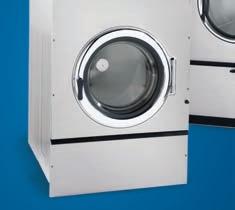


The collaboration brings together three prominent Michigan healthcare systems in a major economic investment in the state’s largest city and repre-
sents the latest healthcare development in the ongoing revitalization of the Northwest Goldberg neighborhood north of I-94 and west of the Lodge Freeway. The laundry service facility
will be owned and operated by the Metropolitan Detroit Area Hospital Services (MDAHS), a Michigan nonprofit corporation.
The MDAHS was founded by four hospitals in the early 1970s
including St. Joseph Mercy Ann Arbor hospital. In the 1980s Henry Ford joined MDAHS, which later grew to include other Saint Joseph Mercy Health System hospitals. It now expands further to include Michigan Medicine, whose board of regents approved the move in February.
When operational in spring 2020, the new eco-friendly facility will have the capacity to service 78 million pounds of healthcare linens every year for the health systems combined. Each health system is expected to achieve significant savings from more efficient operations.
The facility will house about 180 employees, with more than 100 to be new hires. All positions will pay competitive wages, with healthcare and retirement benefits.
Once completed, the facility will be one of the largest shared medical laundry facilities in square footage in the country. It will also achieve the highest standards in infection prevention and control practices during cleaning.
“This is a win-win for Henry Ford, Michigan Medicine and St. Joe’s, the city of Detroit and state of Michigan,” says Bob Riney, Henry Ford’s president of healthcare operations and chief operating officer. “By sharing a centralized laundry service, our partnership demonstrates how healthcare institutions can work together to achieve efficiencies and spur economic renewal.
“We’re committed to doing our part to continue to reinvest in Detroit and the communities we serve throughout southeast Michigan.”
The development was made possible by Henry Ford acquiring the longtime vacant 10-acre industrial property on Elijah McCoy Dr. in 2017.
For nearly four decades, Henry Ford and St. Joe’s, a member of Trinity Health headquartered in Livonia, Mich., have jointly owned MDAHS, which has operated its shared laundry facility on Oakman Blvd. on Detroit’s west side. Aging equipment and infrastructure and limited capacity have rendered the facility no longer sustainable for future use.
Ann Arbor-based Michigan Medicine’s University of Michigan Health System faced a similar plight with its own laundry facility on Hubbard Road, which turns 50 this year. Upgrading or building a new facility was estimated to cost up to $22 million.
TOTAL CONTROL OF YOUR LAUNDRY. Ultimate Flexibility | Increased Productivity Patented Moisture Detection | Fire Response System Multi-Lingual | Quality You Can Trust THE ALL NEW O-SERIES LINE FROM DEXTER. Visit DEXTER.COM to start taking TOTAL CONTROL of your laundry. 4822 WEST FULLERTON AVENUE, CHICAGO, IL 60639 DANDMEQUIPMENT.COM 773.889.5500 CALL TODAY TO LEARN MORE 1.800.451.2676 D&M Equipment Company Order parts online 24 hrs a day at dandmequipment.com/shop ALN_Jr Page.indd 1 5/6/19 3:39 PM Three Michigan health systems collaborate on $48 million modern laundry service facility Set to be operational in spring 2020; eco-friendly facility to have capacity to process 78 million pounds of healthcare linens annually 24 JUNE 2019 | AMERICAN LAUNDRY NEWS www.AmericanLaundryNews.com
Discussions for a new shared laundry service facility began in 2016, with a commitment to keeping the new facility in Detroit.

“Reliable laundry production is essential to providing excellent patient care. Our current facility processes nearly 11 million pounds of laundry each year, and we expect that to grow,” says Tony Denton, senior vice president and chief operating officer of the U-M Health System for Michigan Medicine. “This new facility allows us a cost-effective way of preserving quality laundry services that are key to our patient experience.”
Construction on the 105,000-square-foot shared laundry facility, which expands the building’s current footprint, is scheduled to begin this spring.
The laundry facility will occupy about 40 percent of the property, with Henry Ford retaining ownership of the balance for future use. It will operate free of government subsidies.
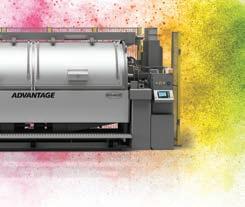

To finance construction of the facility, MDAHS has issued bonds in the aggregate principal amount of $48 million.



The new facility—complete with automated technology— will incorporate sustainable initiatives in its design, including recycled materials and cleaning with environmentally friendly products. The selection of high efficiency equipment will greatly reduce utility consumption and emissions. A wastewater heat reclamation system will be used to reduce natural gas consumption. The technology works by capturing the heat from wastewater and using it to preheat freshwater during the washing process.
“This kind of collaboration among health systems is a great example of how sharing services can reduce the cost of healthcare while improving the patient experience with high-quality service,” says Rob Casalou, president and chief executive officer, Trinity Health Michigan Region. “We are excited to build one of the largest shared healthcare laundry facilities in the country here in Detroit, together with our fellow health systems.”
The 70 employees working at the current MDAHS laundry facility will be relocated to the new facility.

The new facility is housed in an area bustling with development in recent years. In 2015, Cardinal Health opened a new distribution plant on Rosa Parks Blvd. that services local healthcare systems. In 2020, the Henry Ford Cancer Institute will open its new cancer facility. ALN

www.AmericanLaundryNews.com AMERICAN LAUNDRY NEWS | J UNE 2019 25
ADVANTAGE SIDE LOADER WASHER/EXTRACTOR® SOLID, PROVEN PERFORMANCE. Above and Beyond Industry Expectations! Performance Efficiency Safety Get the Advantage Experience the Difference Experience the Difference gabraun.com Direct drive system – positions cylinder in less than 1 minute after extract resulting in higher production compared to other machines Patented safety sensors on doors Robustly built at Braun’s ISO Certified factory Clients report lower maintenance costs compared to other machines Exclusive Parker Hannifin Hydraulics three years, leak-free warranty See us at Clean 2019 Booth #3521 ALN_Jr Page.indd 1 1/16/19 1:59 PM
are
to build
laundry
Henry Ford Health System, Michigan Medicine and Saint Joseph Mercy Health System
collaborating
a 105,000-sqaure-foot
facility at the Elijah McCoy Dr. site. (Photo:
Henry Ford Health System)
TRSA offers consulting services to aid in Hygienically Clean certification protocols



ALEXANDRIA, Va. — Due to the growth of Hygienically Clean certifications, TRSA, the association for linen, uniform and facility services, reports it is now offering consulting services to aid laundry operators in achieving the requirements for certification.
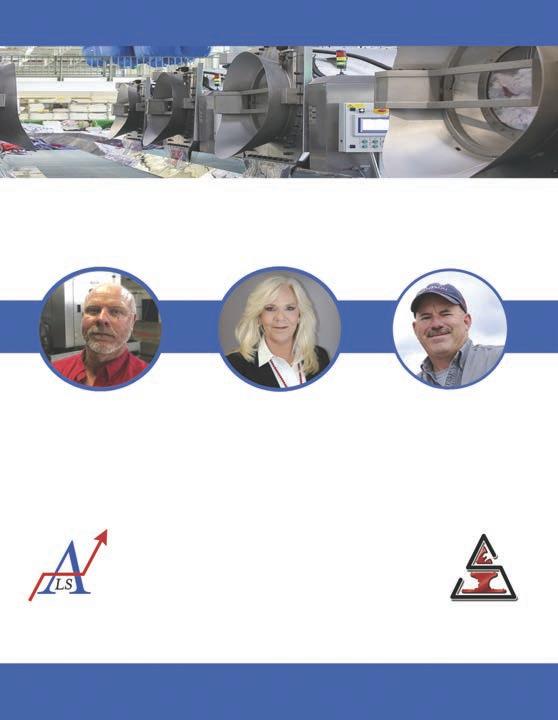
To provide these services, TRSA
recently entered into a partnership with two consulting groups: Six Disciplines Consulting Services (6D) and The Laundry Design Group (LDG). The association says these partners are available to help guide companies through the certification process and provide solutions that address key
certification hurdles, ranging from pre-audit consultation and reporting to program element assistance through complete program design and implementation. Additional services, such as training, follow-up and project management, are available upon request.
“TRSA certifications have been developed to help linen and uniform services companies improve operations by incorporating industry best-management practices,” says TRSA President and CEO Joseph Ricci. “These new services have been designed and introduced as costeffective options for pursuing these valuable certification designations based on demand from TRSA members.”
The LDG program is led by Bob Corfield, CEO of LDG. Corfield has more than 30 years’ industry experience, during which time he has visited, designed and evaluated laundry operations in more than 20 countries, shares TRSA. He is a Certified Professional Laundry Manager (CPLM), certified ISO QMS lead auditor, and for the last seven years has successfully overseen the inspection and reporting process for TRSA certification programs.
Corfield and his team of inspectors have evaluated facilities and their quality assurance (QA) programs to ensure compliance with TRSA Hygienically Clean program standards. In cooperation with TRSA, he’s also assisted in developing the inspection protocol, evidence collection and reporting procedures for the TRSA-initiated ASTM Clean Green program.
He is a frequent presenter/ instructor to industry educational programs and webinars, and contributor to trade magazines.
The 6D program is led by Audrey Carmichael, the lead consultant responsible for coaching and offering strategic advisory services to companies seeking Hygienically Clean certification.
She is a certified Lean Six Sigma Black Belt and a certified ASQ quality auditor with more than 25 years of experience in light manufacturing, product development, technical communications and QA management.
Prior to joining Six Disciplines Consulting Services, Carmichael was the global director of quality assurance for Canberra, an international business unit of AREVA, a leader in the energy industry. ALN

ALN_Jr Page.indd 1 5/10/19 3:32 PM
26 JUNE 2019 | AMERICAN LAUNDRY NEWS www.AmericanLaundryNews.com
Corfield
Carmichael
ideas to improve our sorts. There are many high-tech solutions to help with a cleaner soil room sort. I will speak on a few techniques we have tried to use to improve our sorts on a relatively small budget.
You must always remember that you can only accurately sort so fast. I have seen facilities sort in the 15-22 carts-per-hour range and produce a relatively clean sort. Our laundry has put some measures in place that we feel has helped:
1. Elevate their work station so that it allows operators to toss the linen down into a sling versus trying to throw items into a sling.
2. Slow the conveyor belt down. We have installed inverters on our conveyor belt motors that allowed us to adjust the speed so we could get a cleaner sort.
3. Install chutes over the slings to give a better target. A lot of mixed items come from employees throwing to slings on either side of them. Chutes give them a little better target.
4. Work with the bag openers on not piling large items onto small items on the belt. If the belt operators are forced to dig through large items such as blankets to pick up a gown or washcloth, odds are the gowns will end up with the blankets.
5. Staffing. It is always cheaper to sort linen on the soil side of a laundry. If you find you are having several employees on the clean side sorting linen, then you may just be able to add one employee on the soil belt and eliminate the need for resorting on the clean side.


can be measured by weighing stain loads and comparing that weight as a percentage of total pounds washed.
Similarly, we should do the same for mis-sorts. Weigh missorted linen before sending it back to the soil room to be resorted. We will then know if this is a possible factor in our stain problem.
Once we have defined and measured the issue, we can analyze our results to determine the root cause and take corrective action to improve the situation. Ideally, depending on your product mix, stain should not
exceed 3-4%. Mis-sort should be in the 2% range.












If your rates exceed these benchmarks, determine if something in your process has changed. Do you have new employees in soil sort? This may cause increased mis-sorts and can be addressed with increased training. Are you entering the warmer summer months and if so, has your chemical rep added a mildewcide to your wash chemistry? This may be a source of increased stain rates which can now be addressed.
Most importantly, measure before implementing a change


and measure after implementing the change. Only with good data can we accurately assess the effectiveness of our actions.
It is also helpful to analyze your rewash/reclaim process. Expect to see reclaim in the 85% to 90% range after stain washing. If your reclaim rates fall below this level, contact your chemical rep for assistance.
Additionally, audit stain loads before processing to confirm that passable product is not being rejected as stain. It is not uncommon for acceptable product or wrinkle to end up in the stain loads, which will cause a
perceived increase.
Finally, confirm that bad product that does not reclaim after stain washing is removed from circulation. Again, it is not uncommon for reject items to be repeatedly thrown into stain wash creating the proverbial “stain merry go round.”
Only by establishing solid initial baseline measurements and then measuring our results after implementing changes can we be sure that our efforts are successful allowing us to control our costs and provide our customers with the highest quality service. ALN
W hen solving an issue such as a perceived uptick in rewash or stain, it is important to define the problem and get to the “root cause” before taking corrective action. Lean Six methodology provides several useful tools for achieving this. Identify the problem by applying the DMAIC (define, measure, analyze, improve, control) method. If we notice an “uptick” in stain, do we know how much? What was the stain rate previously versus now? This
www.AmericanLaundryNews.com AMERICAN LAUNDRY NEWS | JUNE 2019 27 Continued from Page 23
| ALN_Jr Page.indd 1 4/17/19 1:47 PM
Experts
Consulting Services
Sam Spence TBR Associates, Saddle Brook, N.J.
•
•


TCATA heads to California for annual convention

OJAI, Calif. — TCATA, the Textile Care Allied Trades Association, will host its annual convention at the Ojai Valley Inn and Spa here, July 31 through August 3.
“We have a great program organized, and the business program is going to be spectacular,” says Russ Poy, vice president of Pellerin Milnor Corp. and chair of the conference.
BUSINESS PROGRAM

TCATA says its Business Program Committee has put together an outstanding program this year, one full of takeaways for all attendees.
In the session “Every Sales YES Begins with a Know,” Sam Richter will reveal web search secrets to help find the right prospects, at the right time with the right message. Considered one of the world’s foremost experts on sales intelligence and digital reputation management, bestselling author Richter will discuss how to win in business in today’s digital world.
Through real-world examples, humor and via his unique super high-energy and fast-paced manner, he will guide attendees through the world of online information, how to find and control it in ways most never thought possible, and how to use it to win in business and in life.
Richter is an award-winning speaker and bestselling author. He was named one of the world’s Top 25 most influential sales leaders and has trained organizations through his many presentations and online training.
Richter’s proven techniques for leveraging online information to grow sales has resulted in millions of dollars in new business. He has won numerous awards, including a Codie Award, the Oscars of the software industry. Richter serves on many boards, was a finalist for Inc. Magazine’s Entrepreneur of the Year and is a member of the Minnesota Speakers Hall of Fame.
In “Contented Cows Give Better Milk: Your People… Your Profit,” Richard Hadden will help make the peopleprofit connection by answering three questions about employee engagement: What is it? Why do I want it? How do I get it? Attendees will learn how to attract and retain an engaged—and more profitable—workforce in this practical, content-packed and entertaining presentation.
Hadden is a certified speaking professional and workplace expert who has, for more than 20 years, studied the connection between people practices and profit performance. He is the author of the popular Contented Cows leadership book series and


has appeared on television shows and been published in Business Week, Entrepreneur and Inc. magazines, as well as many trade and professional publications. Hadden has delivered presentations and training programs for more than 850 audiences on five continents.

TCATA says both Richter and Hadden will be available in the afternoon of their presentations for individual consultations.
Finally, in “What is Happening in Washington…and Why,” past popular speaker Jade West returns to this year’s conference to sort out what is taking place in Washington, including a review of what has occurred, its impact on business, and some thoughts on the major issues anticipated for the coming year. As always, West will also allow time to answer questions.
West is senior vice president-government relations for the National Association of Wholesaler-Distributors (NAW). She also serves as executive director of the NAW Political Action Committee, is a director of the Business Industry Political Action Committee, and a founder of the trade association Get Out the Vote Best Practices Group. Before joining NAW in 2002, West was a senior aide on Capitol Hill for more than 20 years.
Besides these sessions, the conference will feature a board meeting, a golf tournament, spouse programs and special dinners at the five-diamond Ojai Valley Inn.
LOCATION
Located 90 minutes north of Los Angeles in Ojai, the resort says it balances the relaxed glamour of Southern California with reverence for the natural beauty of the region for an experience that embodies the authentic spirit of Ojai.
“This property is just beautiful and is gorgeous for us to be at,” says Poy.
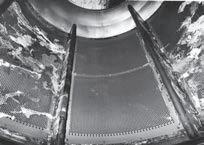
Sprawled across 220 acres scented with wild sage and lavender, Ojai Valley Inn offers an abundance of freshly renewed settings, activities and amenities, including the 31,000-square-foot Spa Ojai and its surrounding Spa Village; The Artist Cottage, a working artist studio and apothecary for instruction in aromatherapy oil blending; a historic, George C. Thomas-designed golf course; apiary and immersive beekeeping program; multiple pools and more than five dining concepts, including signature restaurant Olivella, the sole restaurant between Los Angeles and Northern California to hold both the Forbes Four Star and AAA Four-Diamond designations.
New for 2019, the resort introduced The Farmhouse at Ojai Valley Inn, a 20,000-square-foot epicurean event center.
28 JUNE 2019 | AMERICAN LAUNDRY NEWS www.AmericanLaundryNews.com
information, visit the TCATA website at www.tcata.org ALN
For more
Event to include business program, one-on-one consultations, special activities
Plastic in your Dryers? Get the SPO™ SOLUTION Super-Poly-Off ™ Teflon® coating is world’s most effective weapon against plastic build up in dryers. Currently being used in over 900 commercial laundries and hospitals, SPO™ Teflon® coatings have been THE INDUSTRY LEADER for over 40 years. Every day you postpone trying SPO™ Teflon® it is costing your company profits! Call today if you are:
Eliminates labor time to keep dryers clean
Saves your valuable natural gas costs
Got
•
•
Increases productivity
Long lasting (8-10 years)
coating can be applied to your removable panels
• SPO
coating sold in kits to convert your non-removable
dryers into SPO treated removable panels, done right in your
in just a few hours
• SPO
panel
plant
coating to several major OEM dryer manufacturers
Pays for itself in just a few months • Experiencing costly plastic plugging in your dryers • Seeing higher gas costs • Wasting your valuable maintenance labor time CONTACT PCM FOR FREE SPO COATING FOR YOUR TEST PANEL!!
Company has been a DuPont/Chemours Licensed Industrial Applicator specializing in applying Teflon® non-stick coatings since
let us add your name to our list of SPO™ customers who once had a costly plastic problem. ! sales@pcmco.com 2 800-222-0317 www.pcmco.com/SPO-coating.html Unretouched
with SPO™ Teflon® after 18 months of use DON’T TRY INFERIOR KNOCK-OFFS...
• Exclusive
•
PCM
1962,
photo
West
Hadden
Richter
Employer drug, alcohol testing policies
someone living in the state.”
BY MATT POE, EDITOR
ALEXANDRIA, Va. — Jennifer Sandberg, partner in the Atlanta office of the Fisher Phillips law firm, says there are plenty of studies that show that drug abuse in the workplace has all kinds of impact.
It can cause absences with health-related problems and affect productivity. Safety is a concern, as are security and theft issues, employee morale, insurance costs, and so on.
“An employee or group of employees with a drug issue is going to take a toll on any workplace,” Sandberg says.

Now add in the fact that more and more states are legalizing medical or recreational marijuana, and that opioid abuse has been called an “epidemic.”
In light of all this, how can a laundry and linen service craft an effective drug and alcohol testing policy?

Sandberg discussed these issues and more during the recent webi-
nar Drug Testing in an Era of Marijuana and Opioids presented by TRSA, the association for linen, uniform and facility services.

FACTORS TO CONSIDER
Sandberg says there are basic, but key, considerations that go into any decision that an employer might be making about its drug and alcohol policies or processes.
The second consideration is the culture of the workplace. It is not a requirement in many places that an employer do any drug testing, but most employers choose to do drug testing, shares Sandberg.
“Clearly it’s a matter of culture as much as it is law and policy, and whether or not an organization is interested in some form of a drug and alcohol policy and process might depend on whether the company is publicly or privately owned, who those owners are and what those owner’s beliefs might be, the size of the company, the geographic location of that company, safety considerations, hiring and retention challenges,” she points out. “It might also depend on something like customer requirements.”
The first is to be aware of state law. “State law on drug testing varies from non-existent to highly regulated,” she says. “You also need to think about the state law where your employees live, even if it’s not where your employee works. Many state statutes don’t do a good job making it clear whether or not the coverage is for someone working in the state only or if it’s also for
Sandberg says the there’s not a single “right” answer, but the factors mentioned provide a spectrum of things to think about to develop a policy and a practice that works well and supports the business.
There are at least two competing interests when dealing with drug testing: hiring and retaining enough good workers, and safety,
productivity and discipline.
“At a time of low unemployment, sometimes it can be difficult to find qualified candidates for the position, much less find enough qualified candidates who can pass your various screening processes to become an actual new hire,” she says. “And you want your workforce working safely, being productive, following your rules meeting your performance standards.”
And drug abuse makes it hard to find and keep good workers, Sandberg shares.
“Clearly somebody you probably don’t want to hire is someone having a problem with opioids and marijuana,” she says.
Businesses have to come up with a drug testing policy that works well for each facility and balances that employer’s interests.
Ultimately, she says, how and when an operation can test current employees depends on state law.
“Most states are very liberal, allowing you to do what you want
www.AmericanLaundryNews.com AMERICAN LAUNDRY NEWS | J UNE 2019 29 ALN_Tab_half.indd 1 4/17/19 1:55 PM
See POLICY on Page 30
Key considerations for creating an effective policy in the era of marijuana, opioids
(Image licensed by Ingram Publishing)
when it comes to testing, but there are probably a good third of the states that have some pretty restrictive rules around how and when you can do drug testing,” Sandberg points out.

While there is a federal DrugFree Workplace Act, it doesn’t have testing requirements in it. It just says an employer should have a policy prohibiting drug use. However, she points out that there are federal agencies and policies employers need to consider.
The first is the Occupational Safety and Health Administration (OSHA). Under OSHA’s general duty clause, all employers have a “general duty” to provide a safe workplace.
“You have to think about your workforce and how drug use could affect safety, whether or not you would be meeting that clause,” says Sandberg. “The other thing is recently OSHA has come out to talk about a rule involving postincident drug testing.”
OSHA has taken the position that employers should not always conduct post-accident drug testing unless the employer has a reason to believe the employee’s actual conduct contributed to the incident and seems related to drug or alcohol use.
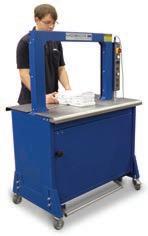
“The reason for OSHA’s position is they don’t want employees to fear reporting a workplace injury simply because the employee is scared or knows that they won’t pass the drug test,” she shares.
The federal law that comes into the equation is the Americans with Disabilities Act (ADA). Sandberg points out that drug addiction
is actually a disability under the ADA. It protects rehabilitated drug addicts.
“So if once upon a time back before I went to law school I used heroin all the time and then I went to a treatment program and got clean life’s been great ever since, I would be considered a rehabilitated drug addict, and I am forever protected by the ADA as a recovered addict,” she offers as an example. “But the ADA does not protect the current use of illegal drugs.”
However, she points out that somebody who has a current drug problem, who has been reporting to work and getting the job done, no matter how poorly, if that individual asks for a leave for rehab, that may be a reasonable accommodation that may have to be granted.
The Equal Employment Opportunity Commission (EEOC) takes the position that if current drug use is recent enough, it could be reason to justify that drug use is an ongoing problem, Sandberg says.
“Courts have said current use can be anywhere from a few days or a few weeks of the incident or event at issue,” she shares. “It’s frustrating for you as an employer, but there’s no one set number of days, hours where you know for sure it’s ‘current’ drug use. And that’s a big deal because obviously if you can terminate someone for current drug use and it doesn’t violate the ADA, it’s very important you know how current is current.”
Some incidents would be easy to spot, such as catching an employee smoking marijuana or doing drugs at the workplace.
“But what if you hear through the grapevine that an employee was using drugs a few days ago or a few weeks ago, or the drug test results
come back and there are traces in the employee’s system and the lab can’t give you a satisfactory answer as to how long ago the employee might have ingested the drugs?” Sandberg poses.
“Be sure you have a full understanding of the ADA and you understand how that coordinates with any drug-testing policies or drug and alcohol policies that you might have.”
She says there are two important points to remember. First, post-offer pre-employment is an employer’s window to obtain medical-related information about the potential new hire.
“You’ve issued an offer of employment, but it’s pre-hire, and that’s when you should be doing your drug testing and any other medical exams that you are going to do to see if your employee is fit for duty,” says Sandberg.
Second, once somebody becomes and employee, then any type of medical examination or inquiry must be job-related and consistent with business necessity. “Typically if you’re going to test somebody, it’s because you see evidence of some type of performance or safety issue, or you’re trying to determine if your employee is fit to perform a particular job,” she points out. “There are lots of ways you can test your employee, but you have to remember the ADA and how it impacts your policy and your testing program.”
There’s one other law that employers need to think about, according to Sandberg. It’s a federal law, and it has a state law equivalent in about a half dozen states, called the Family Medical Leave Act (FMLA). Under FMLA, current drug addiction is a serious health condition.
“Contrast that to ADA, which doesn’t protect current drug use

but does protect a recovered addict, flip back to FMLA, now current drug addiction is a serious health condition,” she points out.
“Under ADA, we might have been allowed to fire somebody with a current drug addiction, but if that employee is covered by FMLA, the employee is going to be allowed to take job-protected, paid time off to be able to participate in a substance abuse program.”
However, the employee can’t fail a test, have an accident, engage in poor performance, violate workplace rules, and then say they want to take family leave instead.
“It doesn’t work that way, but if the employee comes to the employer first, you have to remember about the protections of FMLA, you have to comply with them,” shares Sandberg. “Not all employers are covered by this law, but if you are, you definitely have to offer your employee FMLA leave.”
WRITING EFFECTIVE POLICY
What is an effective drug-testing policy? Sandberg says that “effective” means it works for the com-
pany, and it balances interests between minimizing drug-related problems, maintaining a safe workplace and being able to hire an adequate workforce.
“Typically you want to focus on prevention rather than punishment because by the time we get to punishment it’s probably too late, we’re going to lose an employee or an applicant,” she says.
“By prevention, we want to consider whether all potential applicants are applying—is there something we can do to broaden our applicant pool? And how do we do that in a way where we get people who are going to pass their pre-employment drug test, or possibly we’ve even made the decision we don’t do pre-employment drug testing or only do it for it for certain substances.”
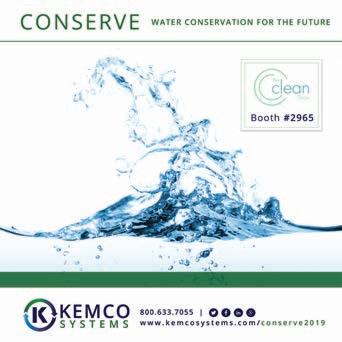
Each employer needs to think about what works in its workforce, says Sandberg. The other thing to consider is when will the employer tests its existing workforce. Options could include random testing, for reasonable suspicion, when people return from leave or vacation, for a promotion, etc.
“Once upon a time, I worked with an employer that tested every employee on the day that they returned from vacation,” shares Sandberg. “The employer felt like that served its interests. It’s certainly lawful to do that in most states.”
An employer can also encourage early intervention, she says. Talk about drug and alcohol abuse issues. Make resources available in the employee breakroom. Offer an EAP (employee assistance program) through the health insurance program. Talk about wellness, keeping the workforce healthy, drug free and moderate in the use of alcohol.
“The most important part of any policy is to be sure you’ve left your-
30 JUNE 2019 | AMERICAN LAUNDRY NEWS www.AmericanLaundryNews.com EAM-Mosca Corporation www.eammosca.com 1-570-459-3426 1-800-456-3420 Bundling Made Easy! (and cost-effective) Just one strong PP strap automatically applied to a bundle of towels, bedding, scrubs or other textiles means secure, neat bundles that stay intact all the way to your customer. Mosca’s ROM Fusion’s precise tension control, thermostatically controlled heat seal, direct-drive motors, stainless steel table-top, and minimal operator involvement all contribute to a bander that offers the lowest total cost of ownership on the market. All with Mosca reliability. Call us today for more info and be sure to visit us at CLEAN, Booth No. 4006 for a Demo! ALN_3rd Page.indd 1 5/10/19 9:56 AM ALN_3rd Page.indd 1 4/2/19 8:52 AM Continued from Page 29
Policy
Opioid abuse has reached epidemic levels in the United States. (Image licensed by Ingram Publishing)
self some room for management discretion,” points out Sandberg. “It is fine to have a policy that says if you fail, you’re fired, but that doesn’t leave you any wiggle room as an employer. You might want to consider alternate language.”
An employer can avoid workplace problems by testing everybody for all kinds of substances, refusing to hire anybody who fails a drug test, terminating a recurring employee who fails, testing often, testing most employees at least once a year or more often, but Sandberg says the business may have a difficult time finding and keeping employees.
“You also might have trouble with antidiscrimination laws, getting federal contracts, labor union agreements, you might have ADA and FMLA issues because you may be doing, in some ways, too much testing,” she says.
“We have to figure out how much testing is appropriate in your business to maintain the appropriate balance between your competing interests of no drug use or limited drug use and super safe workplace and having employees who can do the work you need done.”
It’s vital for an employer to be honest with job candidates and current employees, publicizing that the company has strong drug-testing rules so that people who might abuse drugs don’t even bother to apply, says Sandberg.



The other thing she says companies need to do when crafting a policy is determine what happens when people fail a test.
“We have to know who we are, what our culture is, what our policy is,” Sandberg shares. “And we need to know how we treated similar circumstances in the past so that we can be consistent, and we’re able to follow through and deal with a test failure in a way that makes sense for us.”
Consistent treatment of employees is ideal, she says, but it’s also important that employers don’t get so locked into consistency that they fail to see that sometimes circumstances are very inconsistent and


that there are different facts that can result in different outcomes.
“Zero-tolerance policies are great,” Sandberg says. “They say we don’t allow unlawful drug use, but that doesn’t mean that the managers or HR teams who enforce those policies don’t have to think.”
Termination for everything is not always effective, and sometimes that zero-tolerance policy doesn’t give much room for discretion. It might come across as needless or unfair to employees, so there might be different ways to handle things.



In a written policy, Sandberg says there are a few “bare minimum” things that need to be covered. First, what are expectations
as an employer? What behaviors would violate policy? Also spell out who, when and why testing will be done. Go over substances that will be tested for and the consequences of a positive test result. The consequences when an employee refuses to go for a test. Does the employer want the policy to talk about the benefits of early intervention?
“The next thing you want to think about is education and training about testing and about your policy, which is really good for deterring potential misconduct,” shares Sandberg.
“Everybody in the entire workforce needs to understand that the company has a policy, the risk of drug abuse, how to spot the signs of impairment or abuse and what to do. Human resources need to have plan for how and when you might conduct reasonable suspicion testing what lab would you take people to, how would this work, what timeframe.”
She also says that employees need to understand that if they ask for help, ask for a leave of absence to go to treatment or rehab, that it’s going to be dealt with in a way that’s better for them than if they get caught in violation of a drug and alcohol policy, which is probably going to result in termination.
Training managers and supervisors is key, says Sandberg.
“One of the number-one issues I see is managers and supervisors
ignoring odd behavior,”she says. “And then all too often that odd behavior leads to some kind of bad outcome, and when we start investigating that accident or issue, we find out that there’s a substance abuse problem behind it, and that a manager or supervisor has just had a feeling for some time that something wasn’t right, but they didn’t report it or do anything about it.”
Managers also need to understand what to do when employees report that they are taking prescription medicine, which might impact their ability at work.
Sandberg stresses they need to understand the drug and alcohol policy so they can answer questions, how to maintain confidentiality of medical information, and that they need to work with human resources if they ever think there’s an employee who might have drugs or alcohol in his or her system when they report to work.
Sandberg reiterates that it’s important for a company to develop a drug-testing policy that effectively serves its competing interests.
“Know your state’s laws, know what your policy says and know and support your organization’s culture,” she says. ALN


For information on TRSA’s upcoming webinars, visit www.trsa. org/events/webinars
With today’s hiring challenges, laundries are tasked to do more with less. UniMac®’s TotalVue system will help you maximize performance without adding staff.

TotalVue provides a new level of visibility to your operation – with real-time reports that help identify ways to improve throughput and prevent downtime.

That’s laundry genius. That’s UniMac.
To learn more about the power of TotalVue and request a complimentary Laundry Operating Cost Analysis ($350 value), VISIT UNIMAC.COM/ROI.

www.AmericanLaundryNews.com AMERICAN LAUNDRY NEWS | J UNE 2019 31 ADD OUR SKILLED LABOR TO YOUR LAUNDRY ROOM. (NO HIRING REQUIRED)
ALN_Tab_half.indd 1 1/28/19 10:47 AM
Many states have legalized medical or recreational marijuana. (Image licensed by Ingram Publishing)
Track Career



Energenics appoints Sulecki president






















NAPLES, Fla. — Timothy A. Sulecki has been appointed president of Energenics Corp., a provider of products that remove lint and dust, resolve air flow issues, and attack the bacteria generated by healthcare textiles, says CEO John Hutterly.
Sulecki joined the company in 2006 and has been promoted to jobs of increasing responsibility, culminating in his new position.

As president, he is responsible for all aspects of the business, reporting directly to the CEO.
The company says Sulecki has been instrumental in introducing new technology and products to Energenics, including the UV Max bacteria-killing machinery, hypochlorous acid quick bacteria-killing cart washing technology and single dryer duct filters, along with several products in development to be released in 2019.
During his tenure with Energenics, Sulecki earned his Bachelor of Arts degree in business management from Florida Gulf Coast University and will complete his Executive MBA from Northwestern University’s Kellogg School of Management in the fall.

Continental transitions team member, adds two
OSHKOSH, Wis.— Continental Girbau Inc. recently transitioned Eric Novak to inside sales associate and added two new team members: Geanie Wilson as shipping receiving specialist and Joanne Wilson as accounting assistant.
Novak, of Oshkosh, Wis., has served as customer care associate since May 2016.
In his new role, Novak interfaces closely with Continental customers, distributors and staff; manages lead qualification processes; and handles inside sales and customer relations responsibilities.
“Eric brings a big boost to this inside sales position and is a great first contact to any new lead coming into Continental,” says Pam Kuffel, finance services manager and international sales manager.
“He can quickly qualify a lead and get customers in touch with their local distributor. Eric will continue to grow in this position, bringing added value to all aspects of his new job responsibilities. He fits seamlessly into inside sales thanks to his extensive customer care experience. I am very excited to have him on our team.”
“During my time at CGI, I’ve had the opportunity to get my feet wet in the laundry industry—developing valuable skills and relationships along the way,” says Novak. “In my new role, I look forward to expanding on those things from a new perspective.
“Our sales team here is a close-knit group of great people for whom I have a lot of respect. I enjoy our unique, personal approach to serving our customers.”










Novak holds two associate degrees in applied science: one in paralegal and the other in criminal justice/law enforcement. Both are from Fox Valley Technical College
INNOVATION FOR THE WORLD
TWE18 - TWE24 - TWE28:















Innovative features and modern design







TOLON is the most innovative stand-alone laundry equipment manufacturer with a leading market share in heavy-duty laundries worldwide through the JENSEN brand.





Our new generation washer-extractors TWE18 (40lb.), TWE24 (55lb.) and TWE28 (60lb.), together with the rest of the product line, offer innovative features and performance specifications in a modern design. All washer-extractors are easy to install, operate and service. They are the best economical investment for your business. www.tolon.com
Come and visit us at Clean Show, booth #3355!

in Appleton, Wis.
Geanie Wilson of Redgranite, Wis., assists with receiving and the fulfillment of equipment and parts orders, in addition to a variety of other tasks, including basic parts repair, forklift operation and clerical duties, says the company. She served 14 years with Generac Mobile, in Berlin, Wis., before moving to Oshkosh.
“I am pleased to join the Continental group,” says Geanie Wilson. “I like the small-company feel and friendly, welcoming atmosphere.”
The company says Joanne Wilson, of Fond du Lac, Wis., handles a number of accounting functions, including accounts payable for Continental and accounts payable, invoicing and accounts receivable for Continental Girbau West, in Santa Fe Springs, Calif.


Most recently, she
















 Sulecki
Novak
Geanie Wilson
Sulecki
Novak
Geanie Wilson
32 JUNE 2019 | AMERICAN LAUNDRY NEWS www.AmericanLaundryNews.com
Joanne Wilson
ALN_Jr Half.indd 1 5/3/19 9:21 AM ALN_Jr Half.indd 1 5/15/19 11:29 AM
served eight years as senior accounts payable specialist at a holdings company in Bethel, Mo. In May 2020, she expects to earn her bachelor’s degree in business administration finance-human resources management from Liberty University in Lynchburg, Va.
“When I accepted my position with Continental, I had already done a lot of research on the company,” says Joanne Wilson. “I found Continental had a solid vision and a foundation of integrity. This is what sold me on the company.”
Flattem joins MIP as U.S. sales consultant
MONTREAL — MIP Inc., which provides reusable healthcare textiles and solutions, reports it has welcomed Dave Flattem to its U.S. salesforce as a sales consultant.
Flattem lives in the Twin Cities area of Minnesota and will be responsible for business development in the Midwest, as well as “special projects” as required.

“With an entire career in healthcare and more than 30 years of those years

specializing in healthcare laundry, acute and senior living environments, Dave has the experience needed and will make an immediate and lasting positive impact on our customers,” says Mark Mann, vice president of sales. “Further, Dave has more than 20 years of experience in working with MIP products, systems and our people, making him a natural fit for our company”

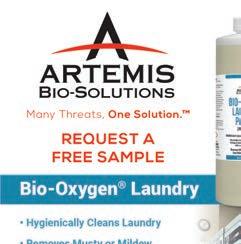
“Having spent my entire career in the healthcare industry, I feel value when I help health professionals take care of people,” shares Flattem. “I will use my passion to help caregivers do their jobs by providing innovative products that help them every day and make patients’ lives better.”
Kemco Systems adds three to sales team


CLEARWATER, Fla. — Kemco Systems, a global water and energy technology company, recently hired three new sales team
members: Matt Lewis, Dillon Moran and David Schwartzel.
Lewis comes to Kemco with an extensive sales background in the laundry industry and outfitting laundry automation systems. Based in Atlanta, the company says he will lead its global laundry market vertical.



Kemco says Moran’s diverse background in water technologies makes for a smooth transition as its regional sales manager in the Northeast Territory.

Joining the company as regional sales manager in the Northwest Territory, Schwartzel is a civil engineer with 20-plus years of experience in designing and selling disinfection and water technologies.
Dargavage rejoins Angelica as West region sales VP

Angelica, a provider of healthcare linen and medical laundry services, reports that Frank Dargavage has rejoined the company as West region sales vice president.

Dargavage will focus on continuing to strengthen customer relationships and supporting commercial growth in the western United States. He is based in Angelica’s offices in Orange, Calif.
“Frank’s depth of knowledge and broad range of relationships with current and prospective customers will enable Angelica to become an even stronger partner for hospital
and medical facilities focused on improving patient care and satisfaction, while closely managing costs,” says Andrew Kratky, Angelica’s chief revenue officer.
“The West region of Angelica is a key driver to our future growth, and we are confident and excited that, with Frank back at Angelica, we will be even more well positioned to deliver leading value and service to customers.”
Most recently, Dargavage served as vice president of sales and channel partners at Applied Silver, a company that provides treatments to improve the sterility and safety of fabrics. From 2008 to 2017, he held numerous leadership positions at Angelica spanning sales, service and operations.
“With an impressive history of delivering quality products to customers spanning 130 years, Angelica plays an important role in providing leading care, safety and comfort for patients,” Dargavage says.
“I am thrilled to rejoin the company at this time of renewed focus on our customers, products and performance. The company is reenergized and committed to delivering for customers, and I am excited to be a part of that mission. I look forward to working with customers to help them achieve their care and performance goals.” ALN
 Moran Schwartzel
Lewis
Flattem
Moran Schwartzel
Lewis
Flattem
www.AmericanLaundryNews.com AMERICAN LAUNDRY NEWS | J UNE 2019 33 ALN_Jr Half.indd 1 3/22/19 1:06 PM ALN_Jr Half.indd 1 4/1/19 5:04 PM
Dargavage
PARTS &









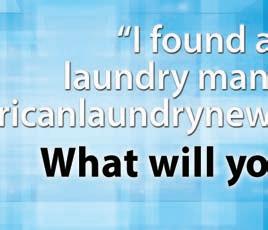




34 JUNE 2019 | AMERICAN LAUNDRY NEWS www.AmericanLaundryNews.com Classified Advertising The Griffin Group, Inc. “Recruitment Specialist” Need to FILL a position? Call Deana Griffin 888-235-2365 www.thegriffingroup.cc deana@thegriffingroup.cc ® PARTS FOR SALE
PARTS, PARTS, PARTS Huge stock of parts for most laundry equipment & boilers. Also traps, valves and lubricants. Overnight delivery. Steiner-Atlantic, 800-333-8883 Fax: 305-751-8390 parts@steineratlantic.com www.steineratlantic.com In need of service and or parts for all your finishing equipment manufactured by BB&D, Lavatec, Washex, and Voss? Contact Michael @ 203-232-4004 or E-Mail me: mtenhave66@yahoo.com Chief Engineer World Famous Daytona Beach, FL. Fast growing independent plant. Come join a great team. For more info email: Ray@TableTopLinen.com
Growing company needs Aggressive Sales Engineer to visit customers and prospects in lucrative Northern
Jersey. We represent Milnor, Chicago and others. We offer excellent benefits and will relocate right candidate. Send cover & resume to jfoster@DirectMachinery.com EQUIPMENT FOR SALE EQUIPMENT
SALE NEW FOLDERS & SELF CONTAINED IRONERS 68” - 138” Wide WWW.JBILAUNDRYFOLDER.COM AMKO AMERICA INC. Parts, Supplies, Service Remanufactured Finishing Equipment AmkoAmerica@gmail.com 561-863-9696 DISTRIBUTOR OFFERINGS DISTRIBUTOR OFFERINGS 2019 CLASSIFIED RATES: One- to fivetime rate: $2.75 per word, boldface $2.80 per word. Minimum charge: $25.00 per ad. Call or write for our three- and 12-time rates. If box number is used, add cost of five (5) words. Display classified rates are available on request. All major credit cards are accepted. DEADLINE: Ads must be received by the 1st of the preceding month. For example, for a June ad, the closing date is May 1st. PAYMENT FOR CLASSIFIED ADS: Must accompany order. DESCRIPTION FOR NEW OR USED LAUNDRY EQUIPMENT, DM IS YOUR SOURCE FOR ALL YOUR NEEDS Skyline Mini (2009) with Stacker Jensen Reconditioned 2-Roll 36 Steam Ironer Washex FLS600 – 135lb Soft Mount Washer, New Bearing Milnor 36021V5J – 80lb Rigid Mt Washer, New Bearing (1) Milnor 60lb Washer 30022F8J Soft Mt (1) Milnor 72072 – 500lb System Dryers (2) Sharper 100” Steam Ironer ADC 236 Stack Dryers (10) Unimac UWN065 – 2006 Washer w/New Bearing Unimac UW100PVQ – 2004 Washer UW 60 PVQ Reconditioned Electrolux Gas Ironer 19” Roll, 120” length with Folder Wascomat EX670CL 75lb Soft Mt Washer 2007 ACQUIRED FROM LINEN PLANT CLOSING 1- Skyline Single lane Folder with Stacker ACQUIRED FROM ASSISTED LIVING LAUNDRY CLOSING 1- Air Chicago 1- Unipress CDB Double Buck & ABS Unipress Rotary Double Buck/Sleever 3- MLS170 – 175lb Steam Dryers (2006) 3- M3131SLS – 30lb Stack Steam Dryers (2006) 1- TriStar 28 Gas Folder For Pricing call Ron Hirsch 516.938.4300 • 516.315.7426 Hicksville, NY • www.directmachinery.com 2007 Chicago TriStar 32PCS Gas Ironer 2000 Chicago Comet Executive 66” Gas Ironer 2013 Continental 20X125F Gas Ironer 2012 Chicago Skyline S-13 120” Folder 2006 Chicago Skyline S17-2000 Folder 2004 Chicago Edge Maxx Spreader/Feeder 2005 Chicago Air Chicago Small Piece Folder 2013 Weir Small Piece Folder 2011 Milnor 30022V6J Washer 2004 Milnor 30022T5E & 30022T5X Washers 2007 Unimac UW80T3V Washer 2012 Unimac UW60K12 Washers (Qty. 2) 2011 Speed Queen SC80HNF 80LB Washer 2013 Cissell UX75 75LB Soft Mount Washer 2013 B&C 325LB Gas Dryer Unimac, Huebsch, Speed Queen, ADC 75LB Gas Dryers 2015 Unipress V3 Versaform 2004 Unipress DLZ & DTZ Hot Head Double Legger & Topper Rema 18X48 Stainless Return Tank A.O. Smith 399,000 BTU Water Heater View photos of entire inventory at www.washburnmachinery.com 800-245-8425 Keepin’ it clean for over 65 years! POSITIONS AVAILABLE CONTACT US TO BOOK YOUR AD TODAY! CLASSIFIEDS@ATMAGS.COM 2011 Sharp T7 Bagger, Single Lane 2014 PDPI Mat Roll Machine 2003 Milnor G3 CBW, 150lb, 4 Mod 2003 Milnor Centrifugal Extractor 2008 Milnor 6458 - 300lb Tunnel Dryer 2009 Chicago Imperial 36 Gas Ironer 2011 Chicago Imperial 232-136 Gas Ironer 2015 Felins Pak Tyer 2000-16 2012 Milnor MLG78 - 75lb Gas Dryer 2008 Milnor MLG122 - 120lb Gas Dryer 2012 TEA Stack Economizer 2000 Braun 400lb OP w/ Inverter 2012 Milnor 40lb Washer 2011 Milnor 60lb Washer 2008 Jensen Logic Feeder 2011 Air Chicago 2006 Braun SPFMRF 2005 Braun Theta EXPECT EXCELLENCE Celebrating 20 Years! www.ineedjpequipment.com 800.925.3236 Stanco Industries, Inc. Serving The Textile Trades Since 1970 800-932-3769 k for Mike or Deb KEEPING IT GREEN SINCE 1970 WE ARE LOOKING FOR THE FOLLOWING EQUIPMENT: WASHING • DRYING • FOLDING FEEDING • IRONING • FINISHING MATERIAL HANDLING • BOILERS CONTINUOUS BATCH WASHING STACKERS • CART DUMPERS DON’T BE LEFT WITHOUT POWER Emergency Generators Available 50KW to 1000KW Natural Gas & Diesel Please visit our updated website: www.stancoind.com E-mail: buyer@stancoind.com americanlaundrynews www. .com
SERVICE
WANTED
New
FOR
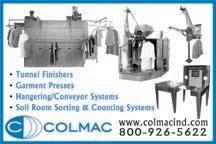

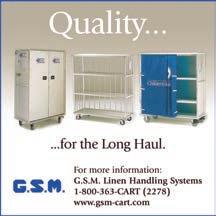









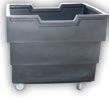

































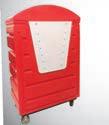









www.AmericanLaundryNews.com AMERICAN LAUNDRY NEWS | JUNE 2019 35 Source Directory A convenient guide to sources of products and services APPAREL FINISHING CARTS, TRUCKS & BASKETS Source Directory listings in American Laundry News are sold on an annual basis at the following rates: All Major Credit Cards Accepted 2019 Listings Regular Boldface All Caps Four Line Listing per Year $925 $1,160 $1,160 Display and additional line rates available upon request CARTS, TRUCKS & BASKETS CARTS, TRUCKS & BASKETS ● Folder Stackers ● Tunnel Finishers ● Cart Washers ● Executive Pressing ● ● ● ● ph: 704.483.9316 sales@leonardautomatics.com www.leonardautomatics.com Financing Available Clean 2019 booth #2943 Laundry/Bushel Trucks • Exchange/Flare/Security Carts • Spring Lifts Diversified Plastics, Inc. South Carolina & Georgia • 800.768.7636 sales@dpiroto.com • dpiroto.com On-Time Delivery & Quality Service! BEST LAUNDRY TRUCKS & CARTS BEST LAUNDRY TRUCKS & CARTS M c C LURE INDUSTRIES, INC. 800-752-2821 • www.mcclureindustries.com email: kim@mcclureindustries.com Sani-Trux is the only molded cart to pass rigorous independent laboratory testing for NFPA fire codes Made of durable fiberglass making the cart life at least twice that of a poly cart Easy to maneuver even in tight spaces Built with quality components to last years longer than other carts Visit our website for other models and avaliable options. We sell direct to all parties! M.I.T. POLY-CART 211 CENTRAL PARK WEST, NEW YORK, NY 10024 800-234-7659, FAX: 212-721-9022 WWW.MITPOLYCART.COM l-800-275-2436 l-800-275-2436 maxi-movers.com Email:sales@maxi-movers.com Non rusting poly bases in different caster arrangements available. M7092 with M7084 In-Plant Laundry BULK DELIVERY TRUCKS Rugged, non-marring trucks in 14 sizes up to 84 cu. ft. capacities for in-plant and on site needs.And our 10 factories nationwide reduce delivery times and cost. ® Visit UsatBooth #1631 FIBERTECH LAUNDRY TRUCKS 800.304.4600 We Create Environmentally Responsible Solutions www.FIBERTECHINC.net DOME TOP NON-REMOVABLE PLASTIC SHELVES DIRECT MOUNT Rolling Out The CLASSICS with NEW Concepts 1 ST C L AS S C ARTS F OR 1 ST C L AS S P RO PE R TIES Lake Wales, FL 33859 Toll Free: 800.683.4116 Local: 863.638.3200 Fax: 863.638.2443 Visit DuraCast.com to explore what Dura-Cast can do for you!



























36 JUNE 2019 | AMERICAN LAUNDRY NEWS www.AmericanLaundryNews.com Source Directory A convenient guide to sources of products and services FLATWORK IRONERS C & W EQUIPMENT (800) 443-3573 FLATWORK IRONER SPECIALISTS REMANUFACTURED IRONERS: Super Sylon Sylon Hypro’s Super Pro Jensen SS700 SS800 Ultima Lavatec UPGRADE KITS: Chain Drive Conversion Vacuum Systems Herringbone Conversion Canopies Inverters Side Covers Roll Springs Jensen Drives SUPPLIES: Aprons Pads Covers Belts Waxes Cleaners PARTS/REPAIRS: All Brands New/Refurbished/Hard to Find COMMITTED TO EXCELLENCE Pellerin Milnor Corp. P.O. Box 400, Kenner, LA 70063 504-467-9591, Fax: 504-468-3094 www.milnor.com DRYERS – 100 POUNDS OR MORE Pellerin Milnor Corp. P.O. Box 400, Kenner, LA 70063 504-467-9591, Fax: 504-468-3094 www.milnor.com CLEAN CYCLE SYSTEMS 960 Crossroads Blvd., Seguin, TX, 78155 800-826-1245 • CCsystems@tqind.com www.cleancyclesystems.com DRYERS – 100 POUNDS OR LESS LINT COLLECTORS & FILTERS MAT ROLLERS For more classifieds visit: .com www. AMERICANLAUNDRYNEWS DRYER BOOSTER & EXHAUST FANS Gardner Machinery Corporation P.O. Box 33818, Charlotte, NC 28233 Ph.: (704)372-3890; Fax: (704)342-0758 www.gardnermachinery.com MATERIAL HANDLING / CONVEYORS www.energenics.com ENERGENICS CORPORATION TALK TO OUR DESIGN AND ENGINEERING STAFF ABOUT YOUR NEEDS 1470 Don St. • Naples, FL 34104 • 800-944-1711 ›› Our In-Line Lint Filter mounts inside, saves space! ›› OPL Duct Mounted Lint Filters 1,000 to 2,700 CFM ›› Fiberglass or Stainless Steel Dry Filters ›› Hundreds Sold Annually Source Directory listings in American Laundry News are sold on an annual basis at the following rates: All Major Credit Cards Accepted 2019 Listings Regular Boldface All Caps Four Line Listing per Year $925 $1,160 $1,160 Display and additional line rates available upon request HEALTH CARE LINEN TRANSPORT CARTS “In-House” or “Over-The-Road Transport” Ergonomic Aluminum - Tough Fiberglass – Ultimate Stainless ALL SIZES & CUSTOM C APABILITIES 800-826-1245 | www.tqind.com | TQcarts@TQind.com America’s #1 Trusted Source Since 1961! HEALTHCARE LINEN TRANSPORTS www.energenics.com ENERGENICS KARTWASHERS FULLY AUTOMATIC KARTWASHER PREMIER W/TOUCHPAD 1470 Don St. • Naples, FL 34104 • 800-944-1711 Designed to wash and sanitize all popular laundry carts • Automatic two minute cycle • Dries and sanitizes • Minimum water useage Concentrates wash effectiveness on the cart interior Fast automatic washing, sanitizing and drying insure optimum cleaning • 15 second detergent wash and sanitizing rinse cycle • Adjustable automotive car wash style drying 1116aln_Energenics Cart Washers SD.indd 1 9/27/16 3:30 PM The Leonard LF Series Financing Available Folder Crossfolder Draper Stacker “The reliability and precision folding exceeded our expectations! “ ph: 704.483.9316 sales@leonardautomatics.com www.leonardautomatics.com Richard Wilbee VP/Director of Sales & Operations Michael Lutz President /CEO Clean19 Booth #2943 OPL-Series DLF-500 Lint Lasso 1,000-10,000 CFM Established: 1991 4,000-35,000 CFM Established: 1985 4” to 18” Duct Established: 2011 www.cleancyclesystems.com • 800 . 992 . 0697 FLATWORK SUPPORT FOLDERS/CROSSFOLDERS FLATWORK CART-WASHING SYSTEMS What Every Laundry Needs In A Cart Washer: M c C LURE INDUSTRIES, INC email: kim@mcclureindustries.com 800-752-2821 • www.mcclureindustries.com A cart washer that works continuously for 15-20 years. The ability to install your cart washer in a cross-contamination barrier wall. A cart washer that really, truly cleans each cart of bio-contaminents inside and out. One that uses existing utilities - no remodel costs. Time selectable efficient cycles that use a minimum amount of water.
SMALL-PIECE FOLDERS




Pellerin Milnor Corp. P.O. Box 400, Kenner, LA 70063 504-467-9591, Fax: 504-468-3094 www.milnor.com
Pellerin Milnor Corp. P.O. Box 400, Kenner, LA 70063 504-467-9591, Fax: 504-468-3094 www.milnor.com
Pellerin Milnor Corp. P.O. Box 400, Kenner, LA 70063 504-467-9591, Fax: 504-468-3094 www.milnor.com
Pellerin Milnor Corp. P.O. Box 400, Kenner, LA 70063 504-467-9591, Fax: 504-468-3094 www.milnor.com





















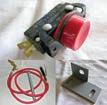

www.AmericanLaundryNews.com AMERICAN LAUNDRY NEWS | JUNE 2019 37 Source Directory A convenient guide to sources of products and services PARTS PARTS & SUPPLIES CINCINNATI LAUNDRY EQUIPMENT We stock all the parts you need! We have something for everybody! Parts for All Major Manufacturers 2648 Spring Grove Avenue Cincinnati, OH 45214 Phone: 513-542-5000 • Fax: 513-542-5022 www.cincinnatilaundry.com cle@cincinnatilaundry.com Your #1 AJAX Source! AJAX • CISSELL LAVATEC • ALLIANCE IPSO • HUEBSCH JENSEN HYPRO/SUPER SYLON HOFFMAN • VOSS PERMAC PARTS & SUPPLIES
– 100
– 100
MORE
WASHERS – CONTINUOUS BATCH WASHER-EXTRACTOR
POUNDS OR LESS WASHER-EXTRACTOR
POUNDS OR
PRESSES – EXTRACTION CONTACT US TO BOOK YOUR AD TODAY! CLASSIFIEDS@ATMAGS COM TO PLACE YOUR AD CALL DON FEINSTEIN 312-361-1682 Source Directory listings in American Laundry News are sold on an annual basis at the following rates: All Major Credit Cards Accepted 2019 Listings Regular Boldface All Caps Four Line Listing per Year $925 $1,160 $1,160 Display and additional line rates available upon request Company Page Company Page INDEX OF ADVERTISERS A.L. Wilson Chemical Co. 9 ADC 13 ADI American Dawn 5, 21 AAdvantage Laundry Systems 26 Artemis Bio Solutions 33 CLM 18 Chicago Dryer 27 D&M Equipment 24 Direct Machinery Sales Corp. 34 EAM-Mosca 30 EDRO Corp. 29 GA Braun ...................................................................................................25 Girbau Industrial 7 The Griffin Group Inc. 34 Hydro Systems 19 J.P. Equipment 34 JENSEN 33 Kannegiesser ETECH 23 Kemco Systems 30 Lavatec Laundry Technology 40 Maxon .........................................................................................................17 Miele 32 Monarch Brands 39 Norchem Corp. 10, 11 PCM 28 Pellerin Milnor 3 Stanco Industries 34 TOLON 32 UniMac .......................................................................................................31 VEGA Systems USA 15 Washburn Machinery 34 Washing Systems 22 ///////////////////////////////////////////////////////////////////////////////////////////// (844) 447-5559 // www.maxi-press.us PRESS MEMBRANES LAUNDRY SPARE PARTS CLEAN SHOW BOOTH #4601
In Memoriam: Jackie Hager, Miller’s Textile Services
WAPAKONETA, Ohio — Jackie Hager, matriarch and minority owner of Miller’s Textile Services, died in her sleep April 21 at the age of 83, shares Andrew Thornbury, vice president of operations for the company.
Hager devotedly served the employees and customers of Miller’s, which supplies businesses and institutions with professional quality uniforms and linens, towels, mats and janitorial supplies, for more than 51 years.
“For most of us, she was the first person that greeted us when we joined the company, welcoming us with her characteristic big smile,” says Thornbury. “For all of us, she was the epitome of a warm heart and steadfast dedication.”
Hager was heavily involved in the Wapakoneta and surrounding communities, donating her time and talents to a variety of causes.
She is survived by her husband of 61 years, and coowner, Roger V. Hager; two children, Robert (Lorrie) Hager and Michele Hunsaker; eight grandchildren; 11 great grandchildren; and a sister, Caroline Suzanne (Gene) Fitzpatrick.
In lieu of flowers and other gifts, the family strongly urges memorial contributions be directed to the St. Joseph Catholic Church or the Wapakoneta Community Scholarship Fund.
in 2010. Today, she serves in a senior-level position where she works to build long-lasting business relationships with customers.
Among many other responsibilities, Washebek interfaces with national accounts, serves as the main point of contact for the sales department, and helps coordinate finished product shipments.
Senso Technics B.V. opens U.S. operations based in Florida
LEERDAM, Holland — Senso Technics B.V. reports that it has opened Senso Technics USA LLC to represent its products in the United States, Canada and Mexico.
The company will provide sales, service and parts for its monorail systems to North America and will be based in Odessa, Fla.
Bruce Burmann has been named president of the venture. He has 36 years of professional experience in the industry, most recently serving as vice president of sales for Voss Laundry Solutions and Lavatec Inc.

“Bruce is widely respected in the industry and is the ideal choice for a leadership role in the North American market,”, says Arie van den Berg and Marco van Hal, principals of Senso Technics, BV.
Dunnewolt in Holland and state-of-the-art software by its own software engineering team.
Also offered are controls for upgrading existing tunnel systems and integration of controls into plants to allow complete visualization of the entire laundry. Senso Technics maintains a 24-hour a day, seven days a week “Help Desk” as it supports installations on all continents of the globe.
Senso Technics says it has already supplied many systems to laundries in the United States during the past six years, adding that much praise has been given to the ease of use of the software and professionalism of the installers and technicians.
Representatives for the company will be at the Clean Show in New Orleans.
Larson retires as VP clinical resources, consulting at Encompass

MCDONOUGH, Ga. — Janice Carter Larson, CLLM, vice president of clinical resources and consulting for Encompass Group LLC, retired from the company effective May 1.

Larson is a 40-year veteran of the healthcare industry and is a pioneer in hospital-based linen cost management consulting, according to the company.
For more than half of her career, she has led a team of RN-based consultants at Encompass helping hospitals and healthcare laundries focus on linen use and utilization, saving customers well over $100 million in the process.
Over the past several years, Larson and her team have expanded their impact to several clinical product areas outside of linen operations. Through her customer engagements and results, she is considered one of the top experts and teachers in the healthcare industry for linen and textiles use and utilization, Encompass says.
OSHKOSH, Wis. — Three Continental Girbau Inc. team members were recently recognized for 15 years of service, including Senior Technical Support Specialist Neal Gadzinski, Finance Services Manager & International Sales Manager Pam Kuffel and Customer Experience Specialist II Karen Washebek.
“The Continental team appreciates the many contributions of Neal, Pam and Karen over the past 15 years,” says Continental President Mike Floyd. “We appreciate their dedication and willingness to go the extra mile for our customers.”
Gadzinski, of Menasha, Wis., joined Continental as a technical support specialist. He quickly expanded his role into warranty management and further developed his expertise in micro board and inverter drive technology.

Today he holds a senior-level role in which he fields technically related calls from distributors, contributes to product testing and improvements, and performs multiple other duties related to sales support and product specification updates.
Kuffel, of Neenah, Wis., began employment at Continental in 2004 after graduating from the University of Wisconsin-Oshkosh with a bachelor’s degree in finance.
In her current role, she manages both the finance department and international sales, as well as serves as the administrator of Salesforce, Continental’s customer relationship management (CRM) platform. She is responsible for the development and management of all consumer finance transactions and programs, as well as export transactions outside of the United States and Canada.
Washebek, of Winneconne, Wis., joined Continental in an accounting role before transitioning into customer care
The Senso Technics product line includes design and installation of monorail systems for new or existing laundries. Senso Technics says it uses the highest quality hardware from
June

5 TRSA
Webinar: Workplace Bullies/ Abrasive Leaders - Why They Act That Way, How to Make Them Stop

Alexandria, Va.
Info: 703-519-0029
20-23 The Clean Show
World Educational Conference for Laundering and Drycleaning New Orleans, La.
Info: 404-876-1988
July
18 Association for Linen Management Webinar: Parlez-Vous Español, Bitte?
She has authored countless articles, served on several industry and publication boards, and is regularly found on industry conference agendas.
Richmond, Ky. Info: 859-624-0177
31- Textile Care Allied Trades Aug. 3 Association
TCATA 2019 Annual Conference Ojai, Calif. Info: 813-348-0075
August
7 TRSA
Webinar: TRSA’s New Safety & Health Certification Alexandria, Va. Info: 703-519-0029
11-15 TRSA
55th Executive Management Institute (EMI) Hyattsville, Md. Info: 703-519-0029
11-15 TRSA
30th Production Management Institute (PMI) Hyattsville, Md. Info: 703-519-0029
September
17-20 TRSA
106th Annual Conference Boston, Mass. Info: 703-519-0029
18 Association for Linen Management Webinar: The Textile Trap Richmond, Ky. Info: 859-624-0177 ALN

38 JUNE 2019 | AMERICAN LAUNDRY NEWS www.AmericanLaundryNews.com
Continental recognizes three employees for 15 years of service
ALN
Jackie Hager
Calendar
Gadzinski Kuffel Washebek Larson
Burmann
CODED MICROFIBER


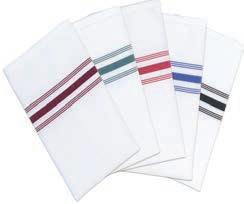
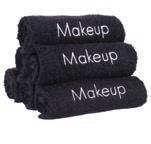




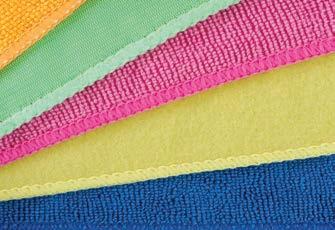

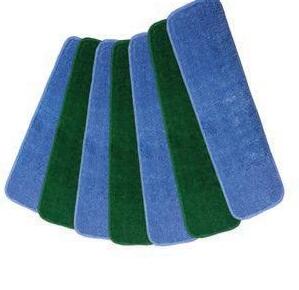
These bar mops are perfect for wipe-and-toss in heavily soiled environments. Weaving defects such as over-stitching or IR cuts reject perfectly good wiping tools from circulation. We buy these at a deep discount and pass the savings on to you. Packed: 100 doz/bale.
When bar mop production runs are over and inspections have been completed, mills have excess yarn. Run Of Mill (ROM) bar mops contain every bar mop that comes o the loom after the first quality run has been finalized, so are more economical than Grade A1 bar mops.
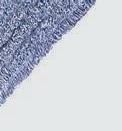
Route Ready bar mops are optically white and packed in bags of 25 so you never have to pre-wash or recount them prior to use. Typically, laundries save 70¢/doz by freeing washroom and finishing floor operators from a whole wash cycle.
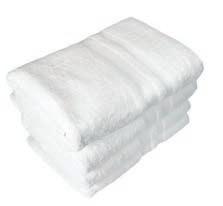



AT $1.75 per doZ
STARTING
STARTING AT $2.35 per doZ
STARTING AT $2.95 per doZ VISIT US AT THE CLEAN SHOW BOOTH 1762 IRREGULAR RUN OF MILL (ROM) ROUTE READY TM monarchbrands.com • info@monarchbrands.com $2.35 POCKET MOPS 95¢ FLAT MOPS 35¢ CLOTHS CLEAN SHOW SPECIALS AT BOOTH 1762 BEST SELLER!!! Makeup towels keep whites white and add a little extra class to guest rooms. PROMOTIONAL PRICING ON NEW ARRIVALS COLOR
200 SKUs of essential microfiber cloths, wet & dry floor cleaning, as well as dusting and specialty SKUs.
$2.35 EACH $4.99 DOZEN PREMIUM VELCRO® MOP Use wet or dry, These Velcro® backed premium long loop mops are color-coded for safety. $7.50 DOZEN
Over
COMMERCIAL LAUNDRY ESSENTIALS
towels
TM BISTRO NAPKINS 18x22 Spun Poly French bistro napkins won’t fade, stain, and are wrinkle free.
GOOD. BETTER. BEST. Selection of carton and bale packed institutional white
as well as all your hospitality and spa & resort needs on display at booth 1762.
































































































































































































































































































